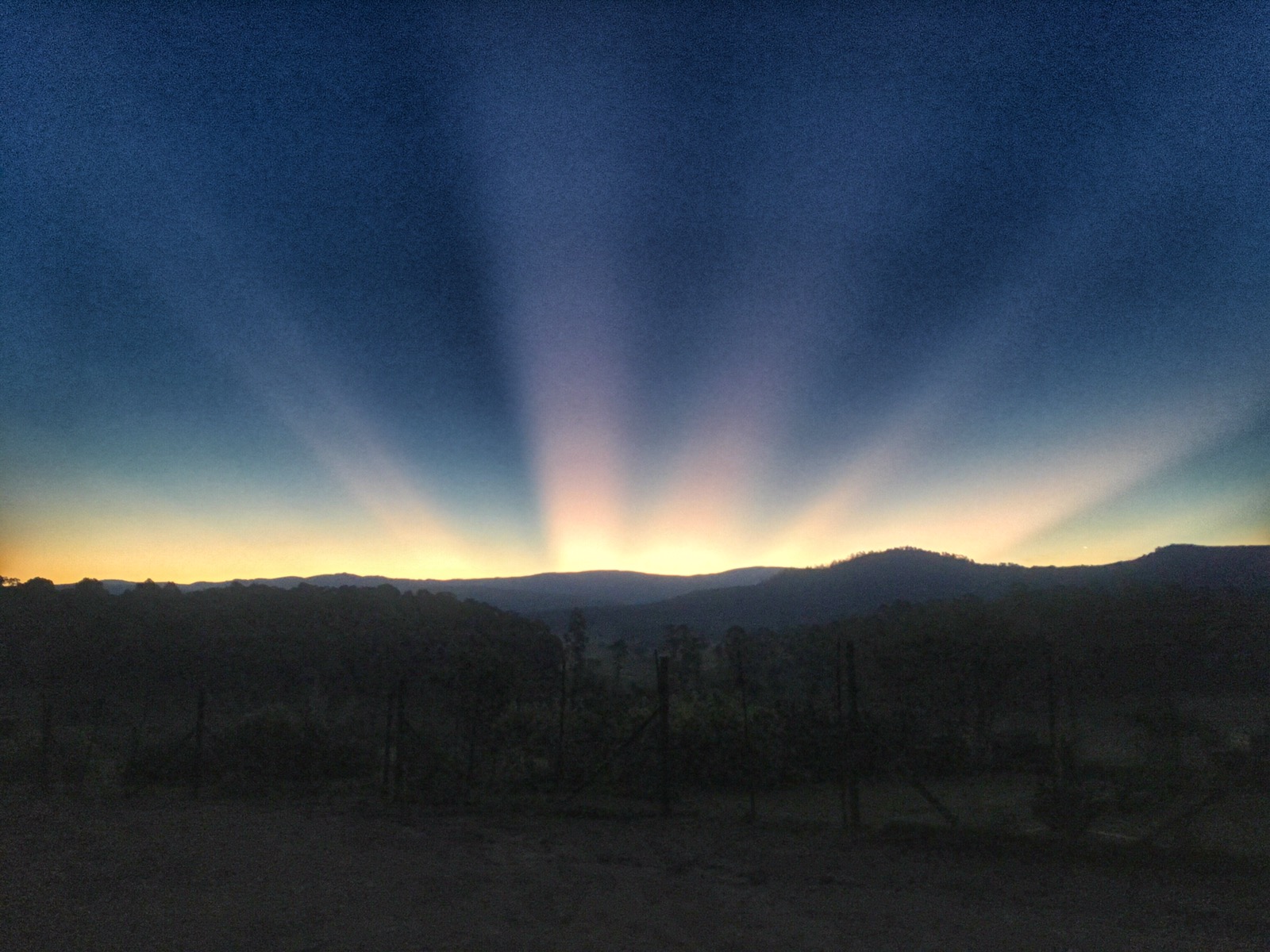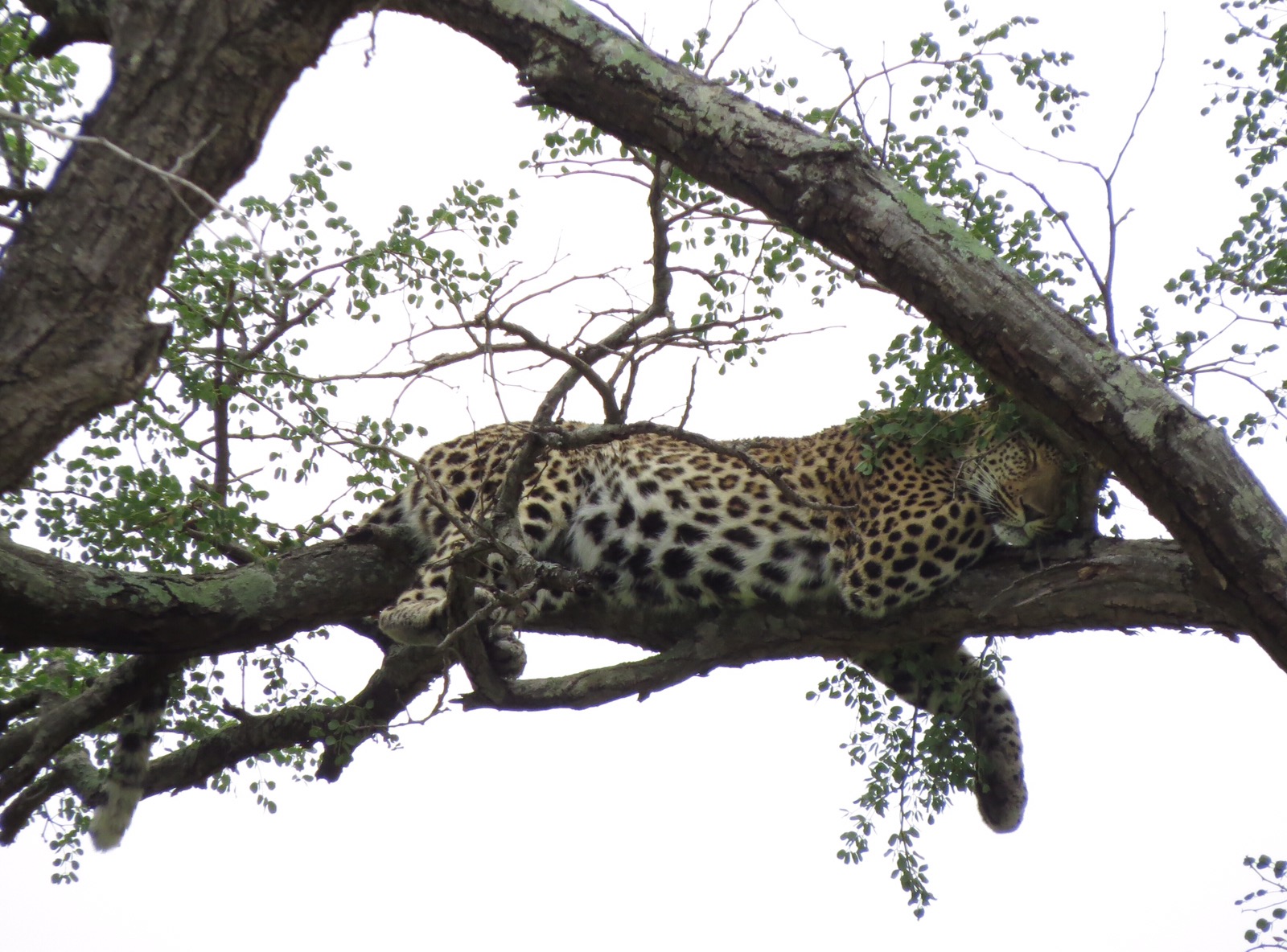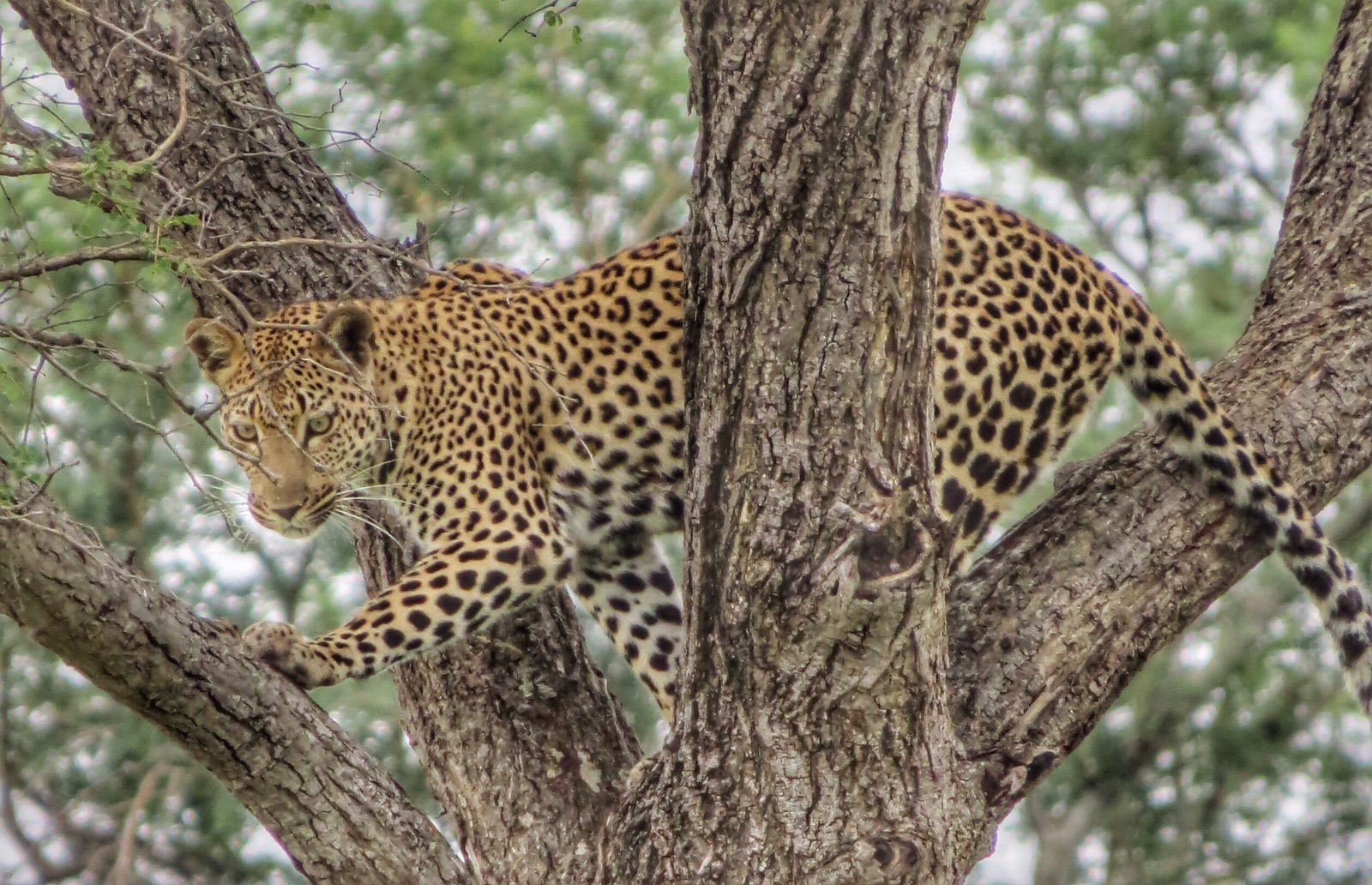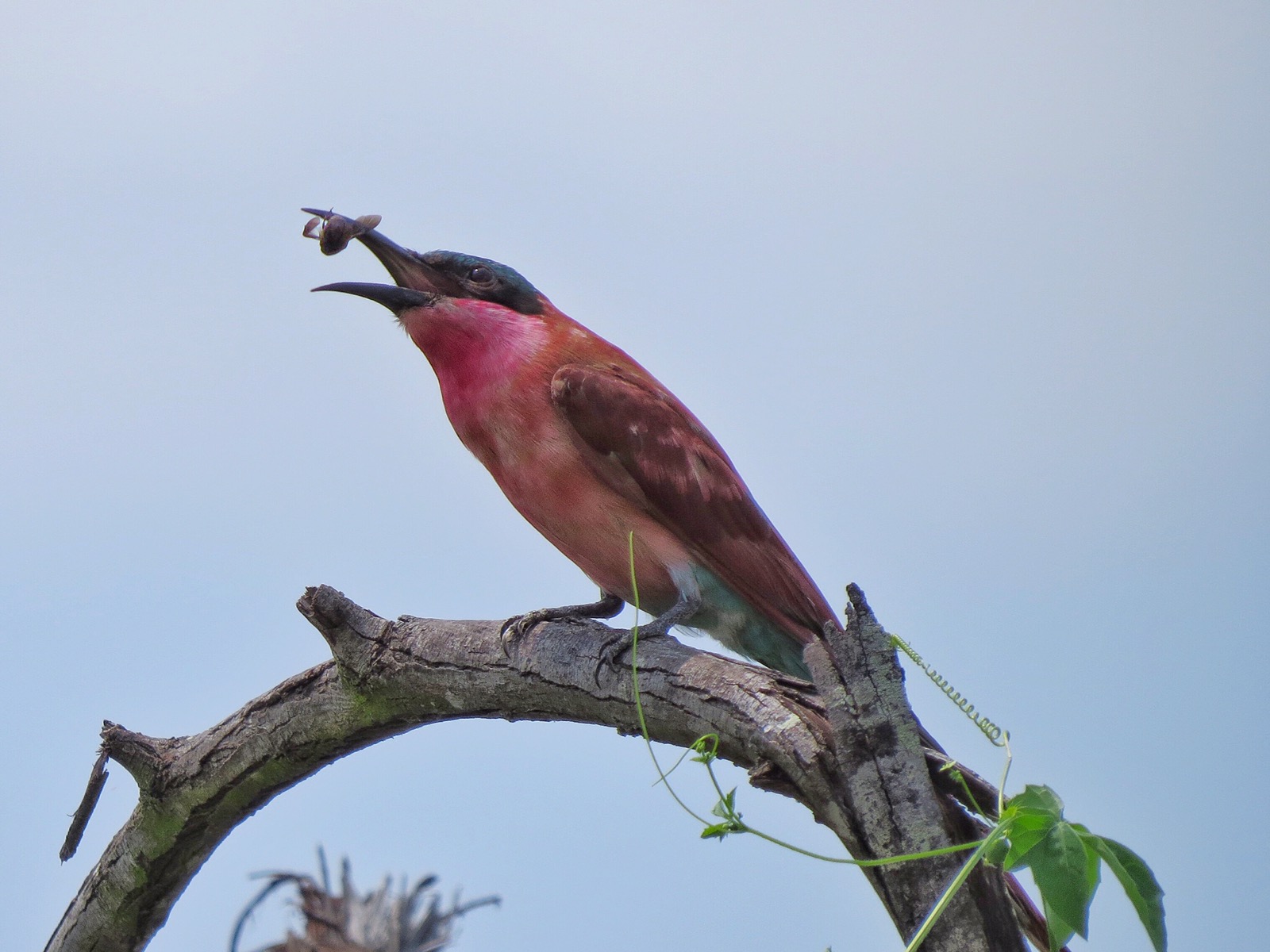Trying to find some relief from the miserable weather, we headed down off the escarpment and decided to revisit Kruger National Park for a few days.
We had bought a ‘Wild Card’ online ($300 annual membership per couple, providing free entry to all South Africa National Parks) which meant that it would actually be cheaper to camp inside the National Parks than in private campsites outside the boundaries.
The weather wasn’t considerably better, but being 600 lower meant that at least we weren’t actually camped in the clouds.
They’ve had huge rains in this area recently and the whole park is lush.
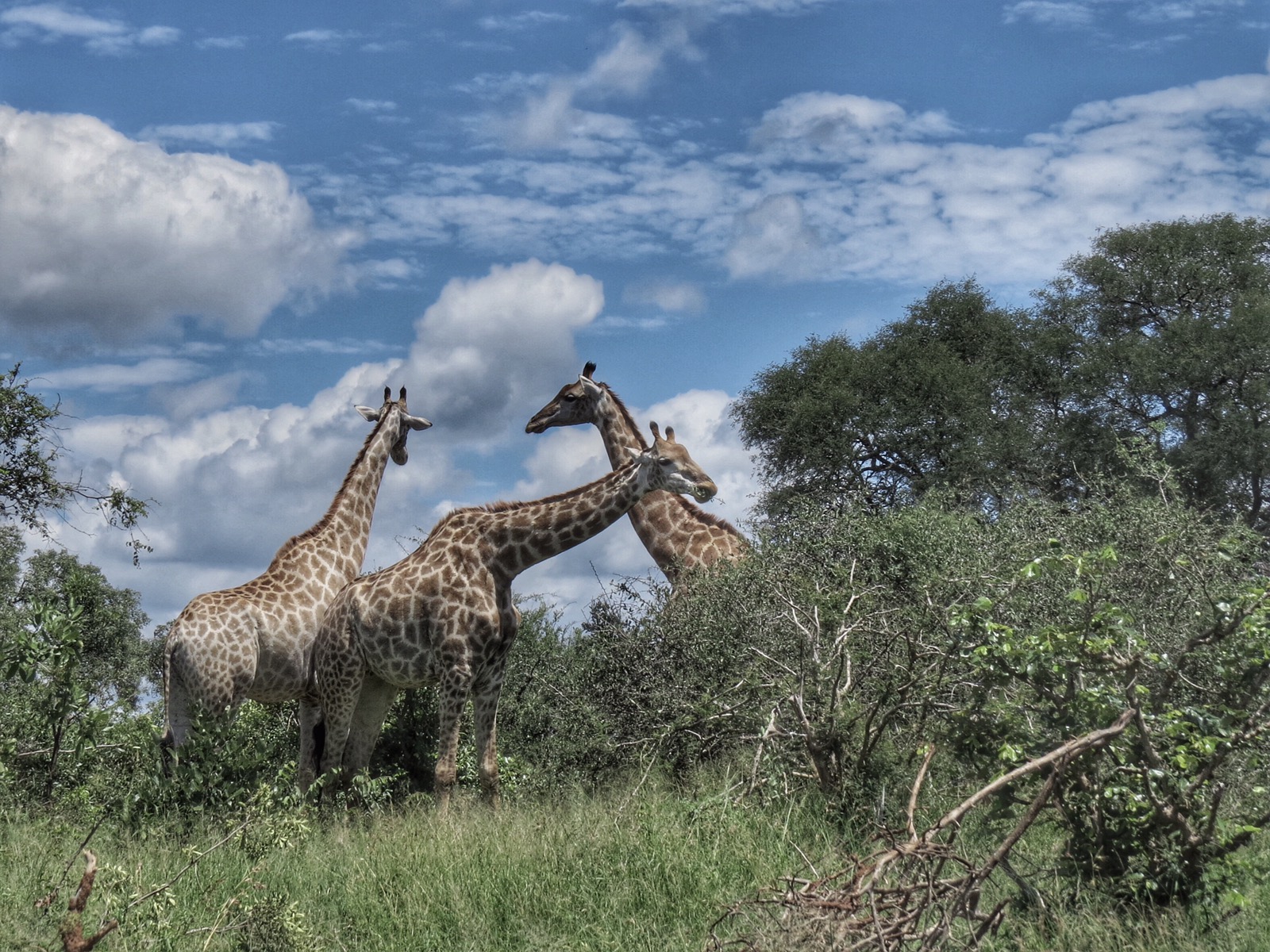
Bursting with greenery and life is fantastic for the bird population, particularly the raptors…
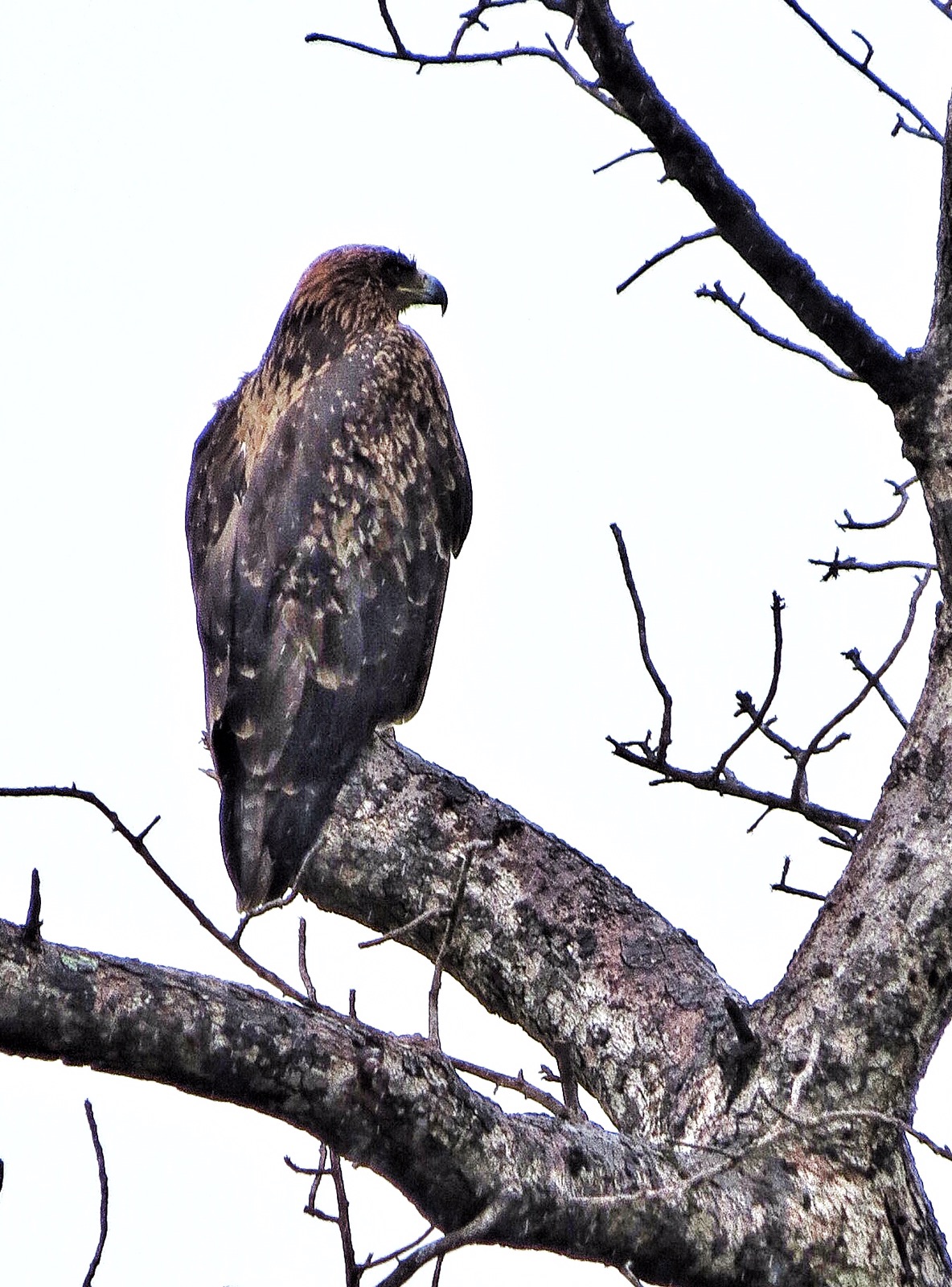
…for whom the abundant insect and rodent population provide an all you can eat buffet.
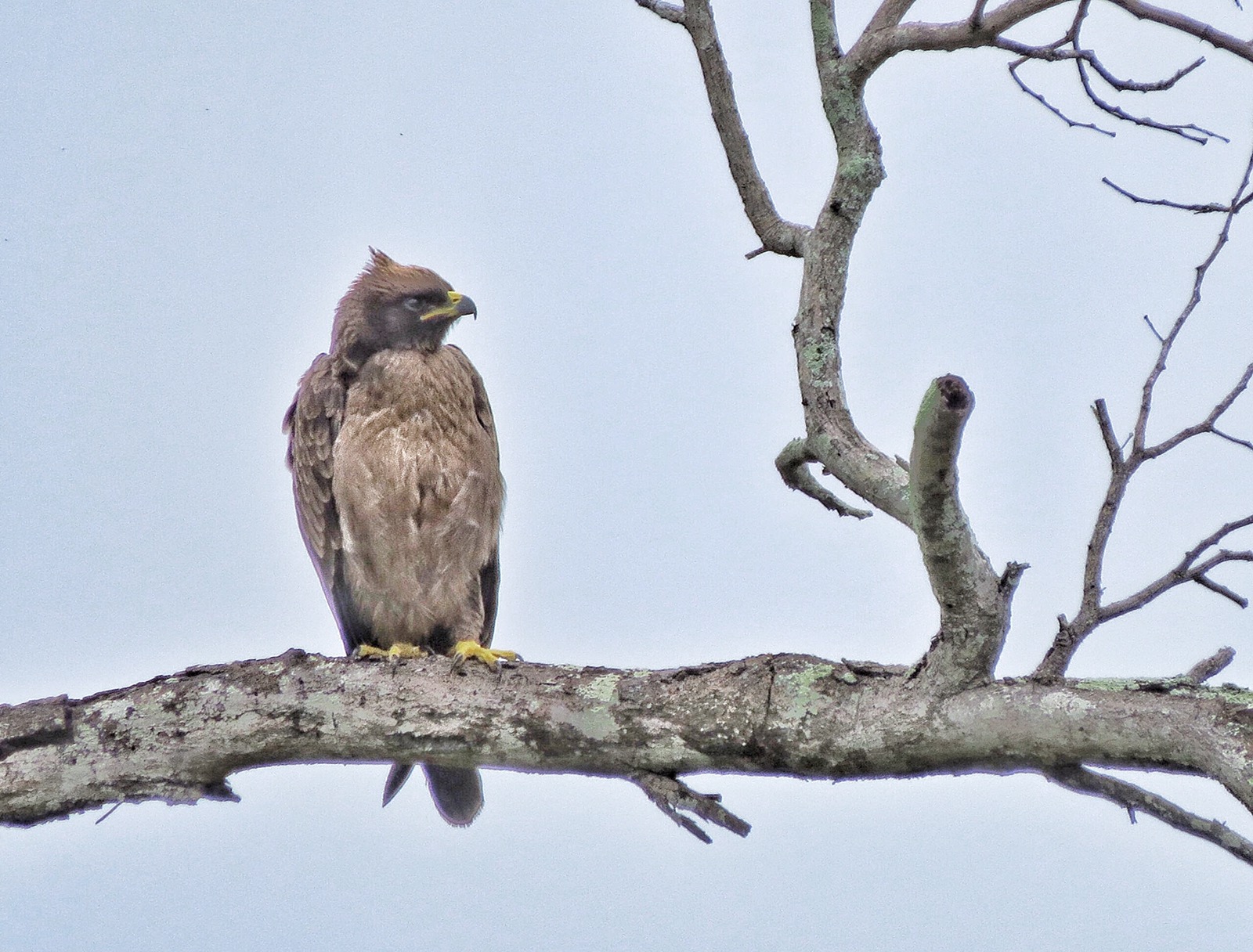
Unfortunately the high grass and thick foliage make more traditional Game-spotting a little more difficult than in the dry season.
If it’s big cats you’re looking for, they’re likely to be hidden in the thick, tall undergrowth or up in the dense tree canopies. Sometimes the only way you know something is close is by spotting the vultures circling or loitering patiently in a tree, waiting to pick up the scraps from a kill.
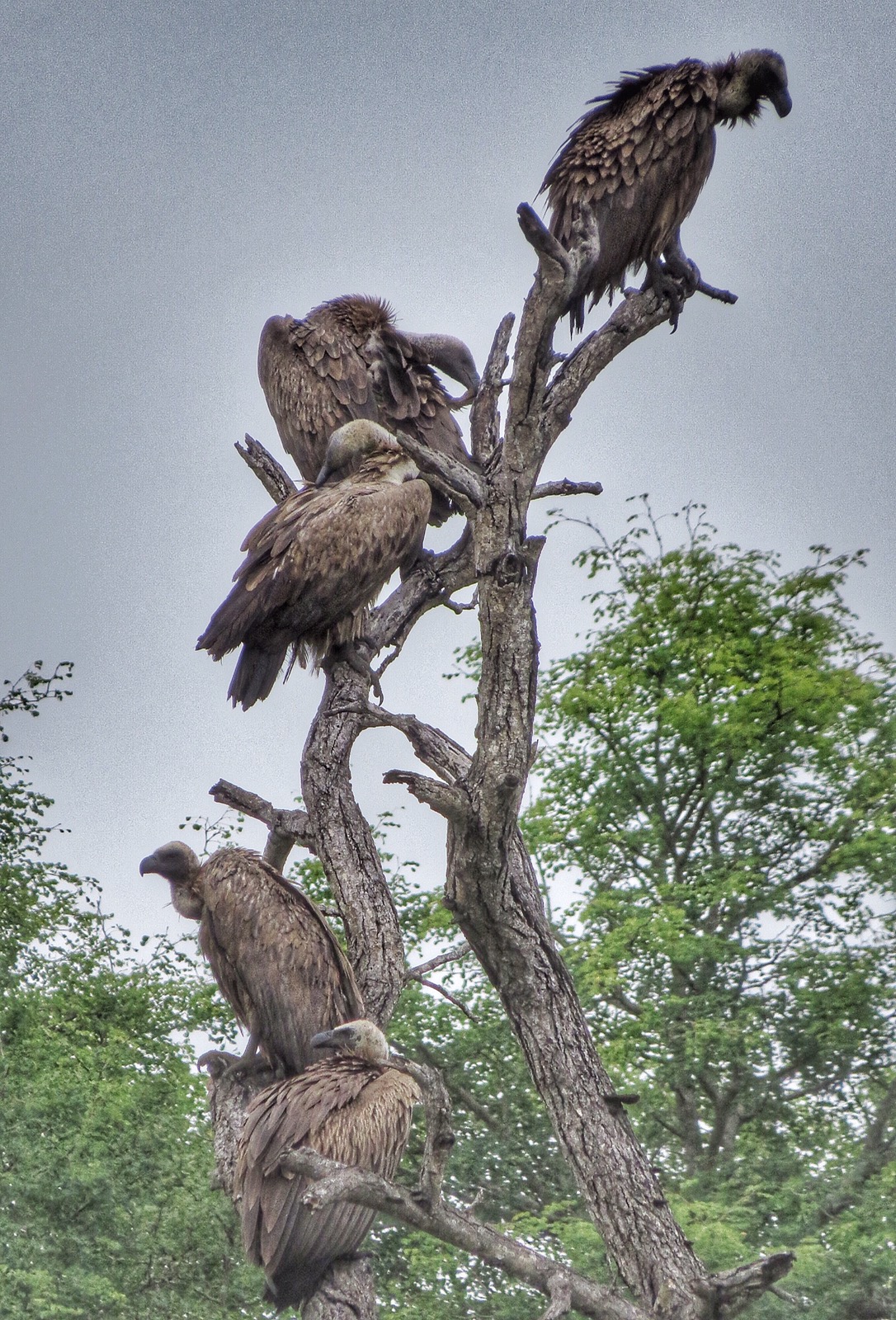
With their beady eyes firmly fixed on the prize, they’re content to wait all day just for the chance to thrust their mangy heads into the belly of a downed zebra, warthog or buck that’s been dead 3-4 days.
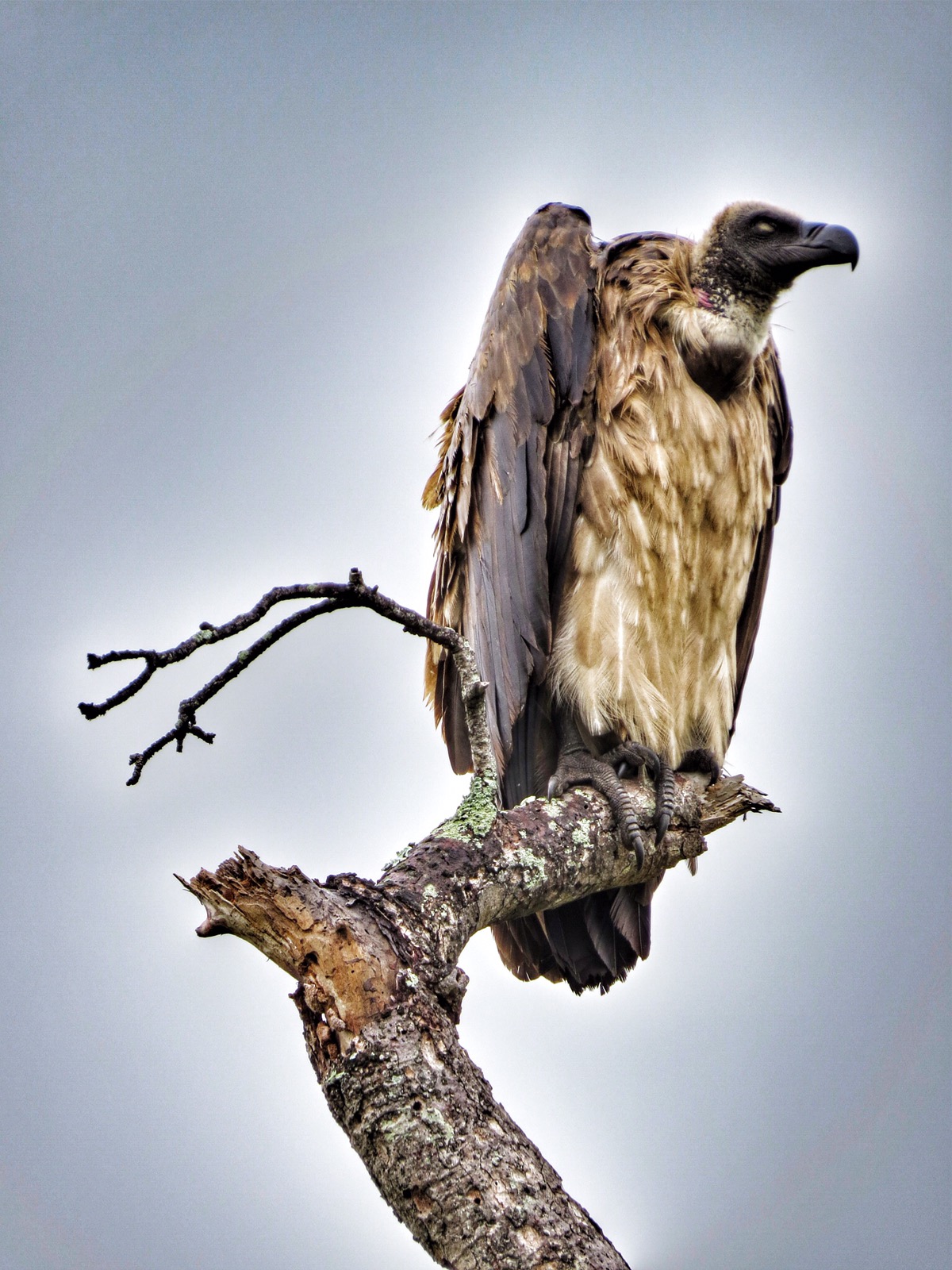
Other than a few tell-tales signs, sometimes you’ve just got to keep your eyes peeled. If you’re lucky, you might spot a leopard in a tree a few hundred metres from the track. If you’re exceptionally lucky, you might even spot one only 20 metres from the track.
We were exceptionally lucky.
Even that close though, since the park is so huge and most of the day is spent cruising the sandy / gravel tracks, it would be all to easy to drive right past.
Whilst keeping one eye on the potholed, corrugated, rutted track ahead, another on the high bush to ensure you don’t get wiped out by a stray elephant / giraffe / buffalo / etc, another on the road ahead so that you don’t run over dung beetles, tortoises, snakes, rodents, etc, and another on your mirrors to make sure nothing is sneaking up on you, this is what you’re looking for…
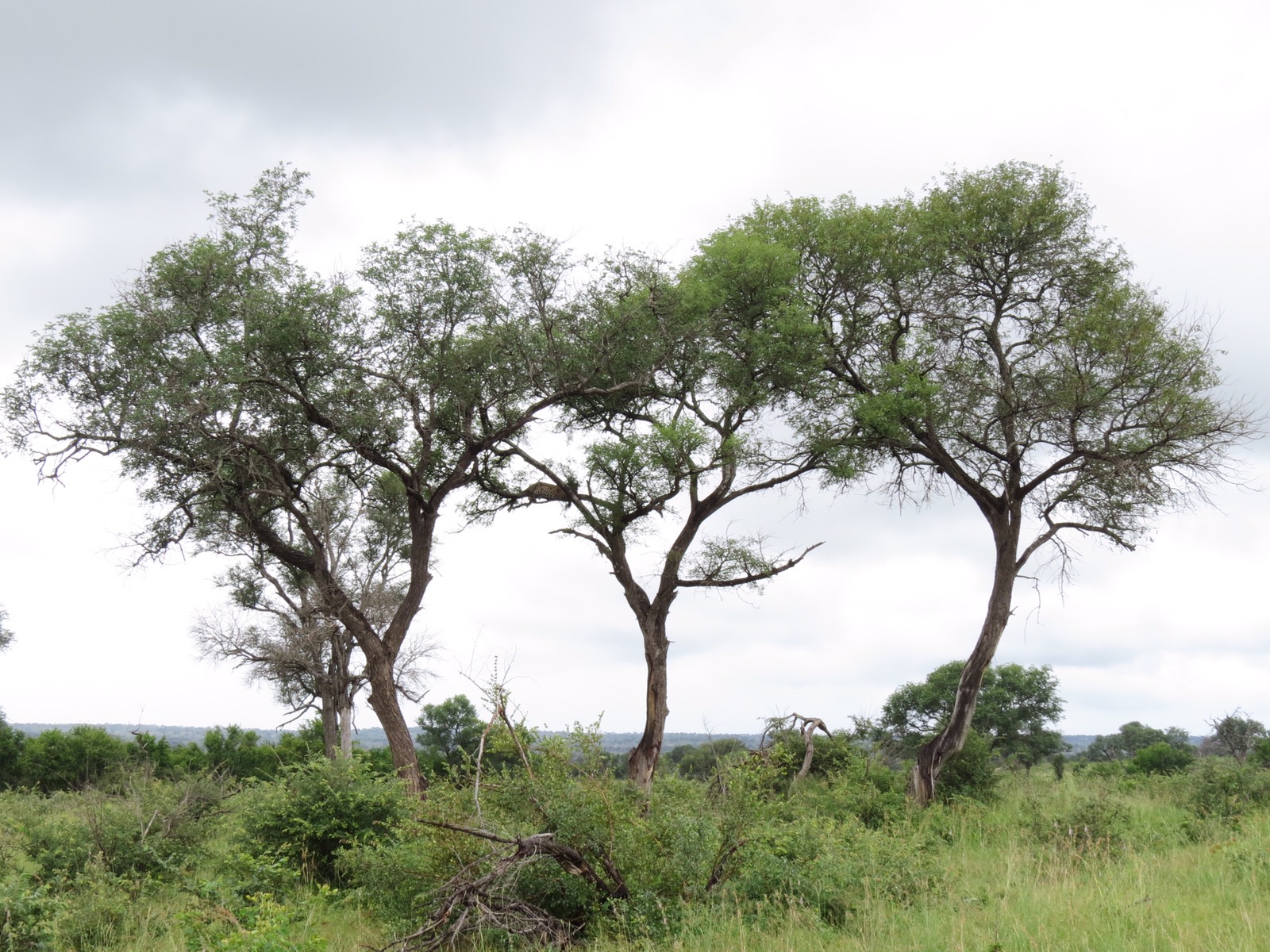
Even when the park is pretty quiet, it doesn’t take long for someone else cruising around to spot a stationary car in the distance and head over to take a look. Nothing wrong with that, there’s no points-system for who spotted the great sighting first. What I can’t understand though is the people who race up, take 2-3 snaps and then race off, having ticked the ‘leopard’ box.
Sure, when a leopard is sleeping lazily, nothing is likely to happen in a hurry. But that doesn’t mean nothing will happen at all.
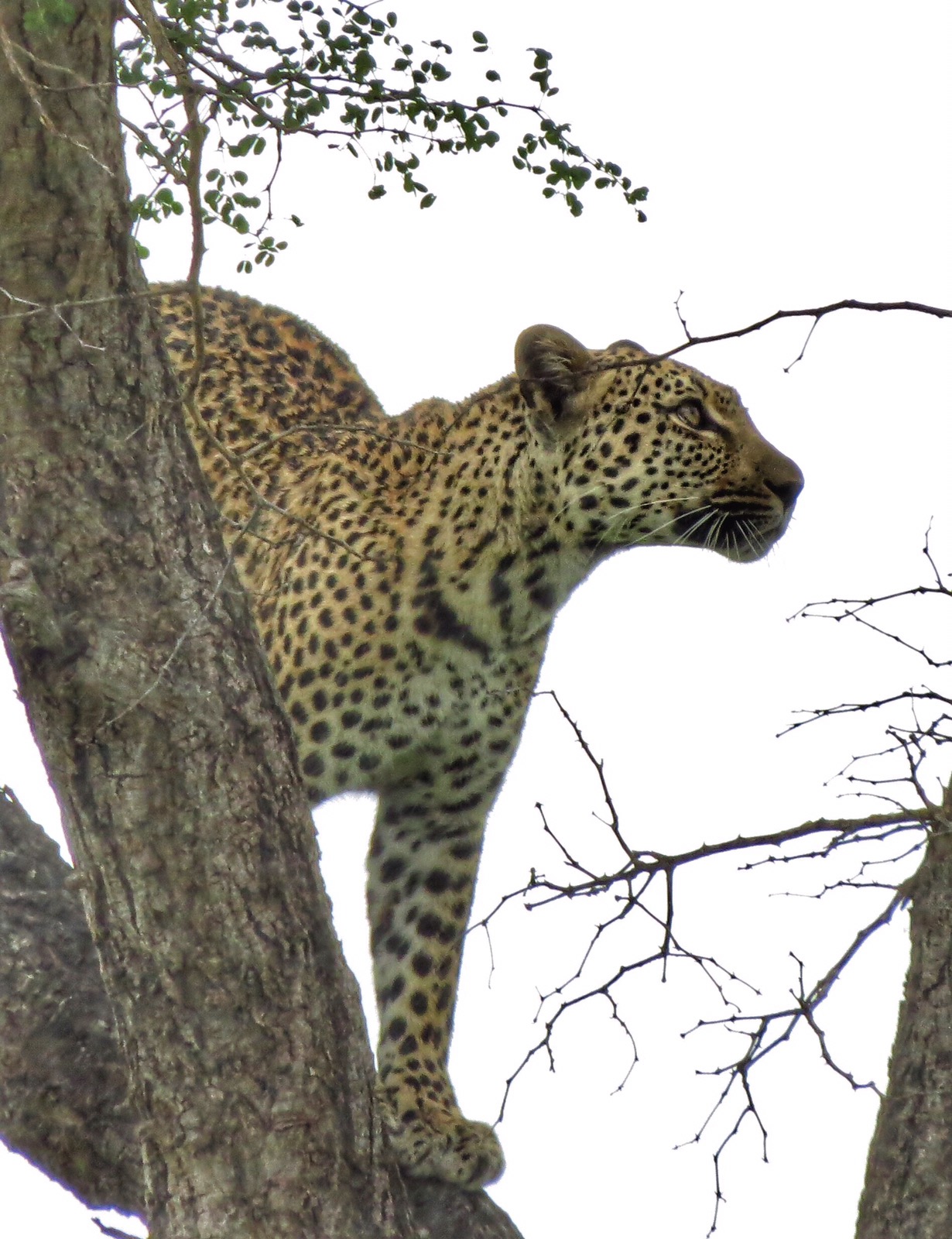
Even if they’re just shifting their weight to get a more comfortable perch, they’re always worth watching.
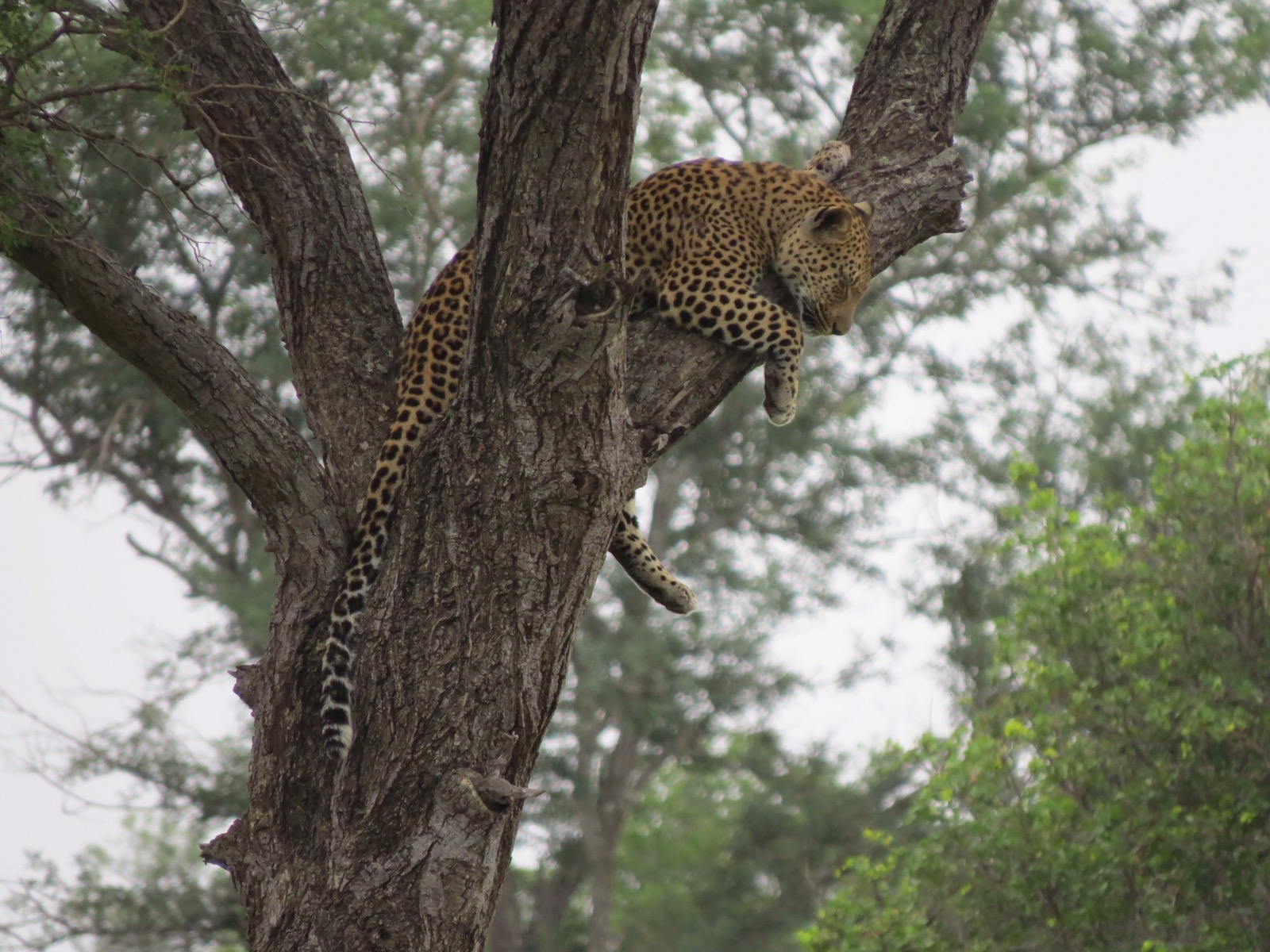
We watched this beautiful young female for more than 7 hours over a 2-day period. I don’t think we were bored for a single minute.
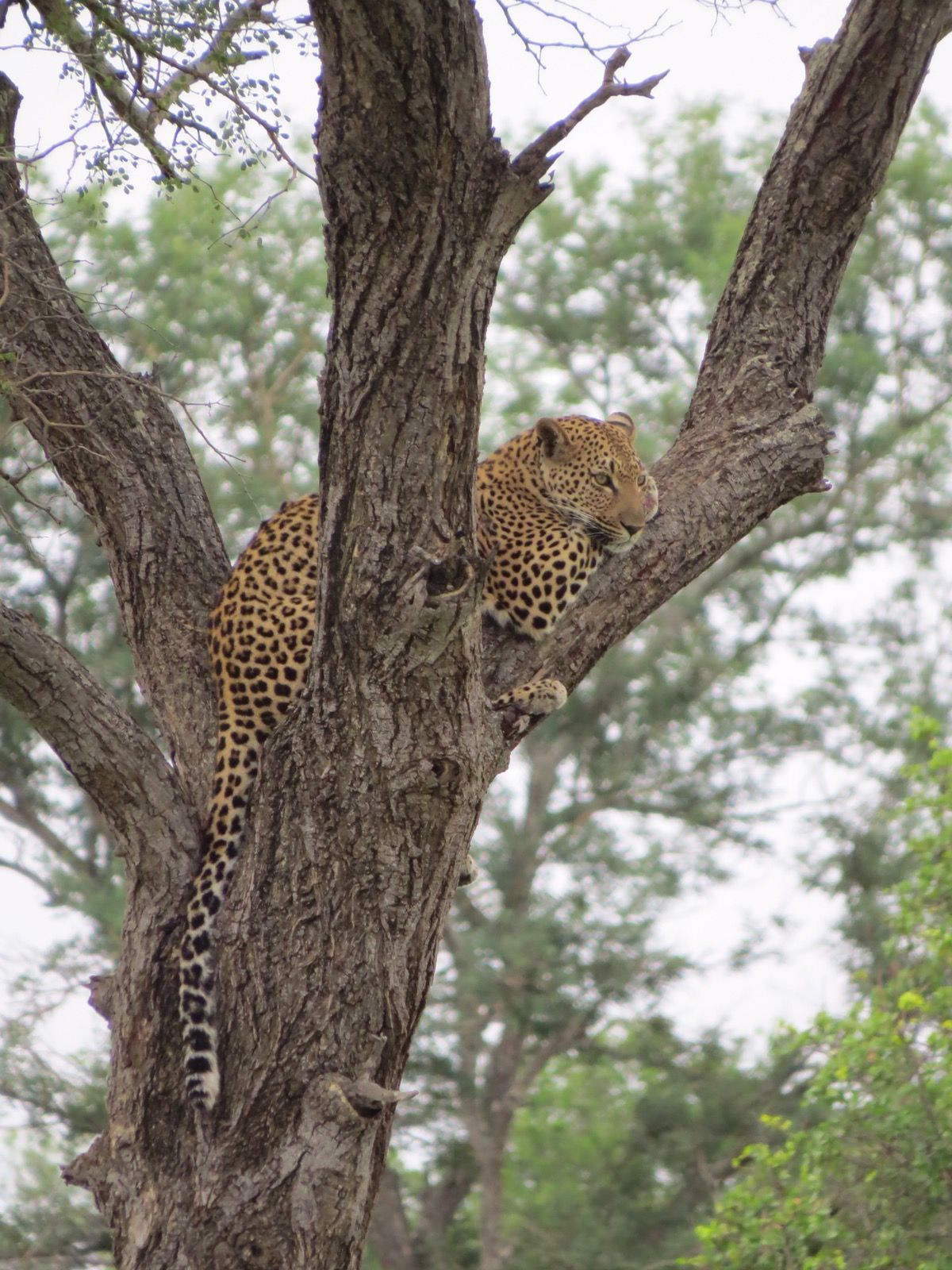
At one point she climbed down for 30 minutes or so and we lost her in the grass. We got some very strange looks from people who passed and asked what we were watching “There was a leopard in the tree, but she’s down in the long grass now. I’m sure she’ll be back.”
“Right. Ok.” …and a knowing look before they drove off to tick another box.
Soon enough though she was back in the tree. After a territorial display to let everyone know this was her patch…
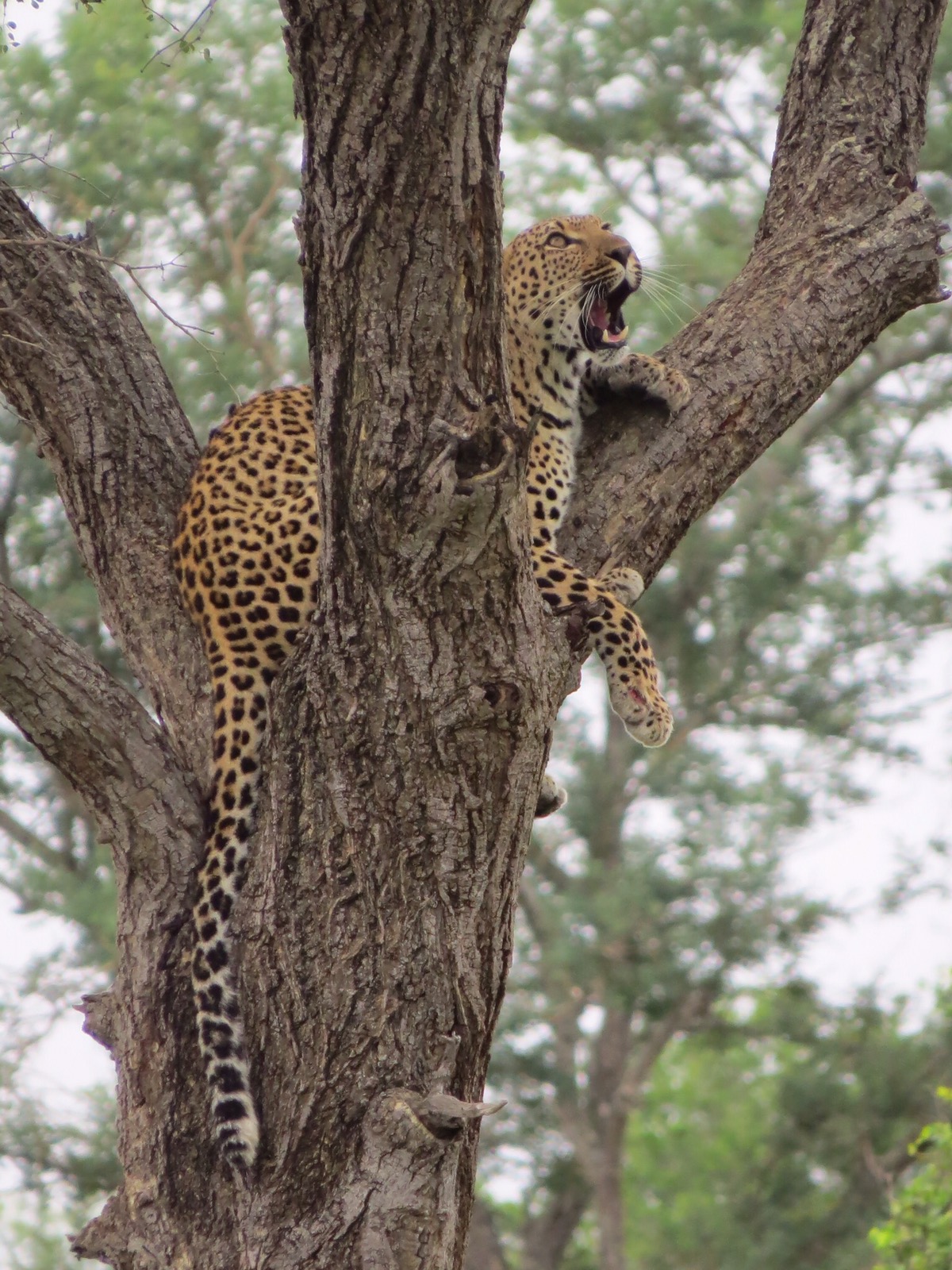
…then disappeared further up the tree, into the thick canopy.
It took us a while to work out what was going on. The reason she was so determined to stake her claim on that particular tree was that she had hidden an Impala carcass in the tree a day or so before.
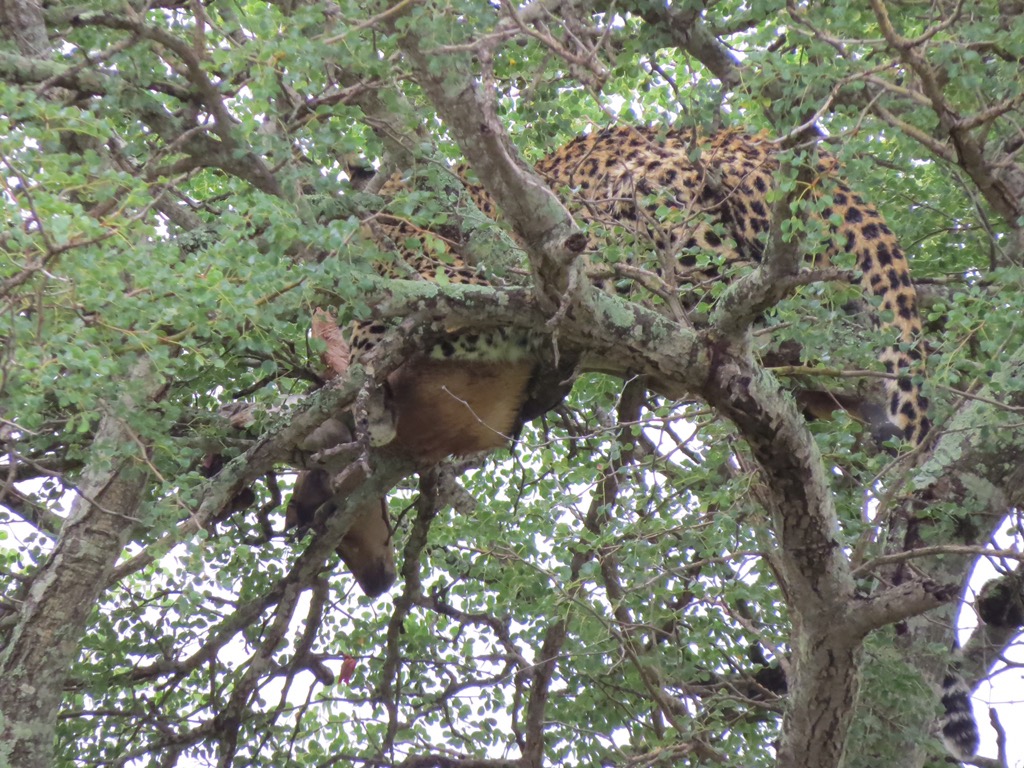
After a good 30 minute feed on what was left of the carcass (imagine the strength required to climb a tree backwards, dragging a fully grown Impala, 70% of your own body weight, between your teeth!) she came back down to her perch…
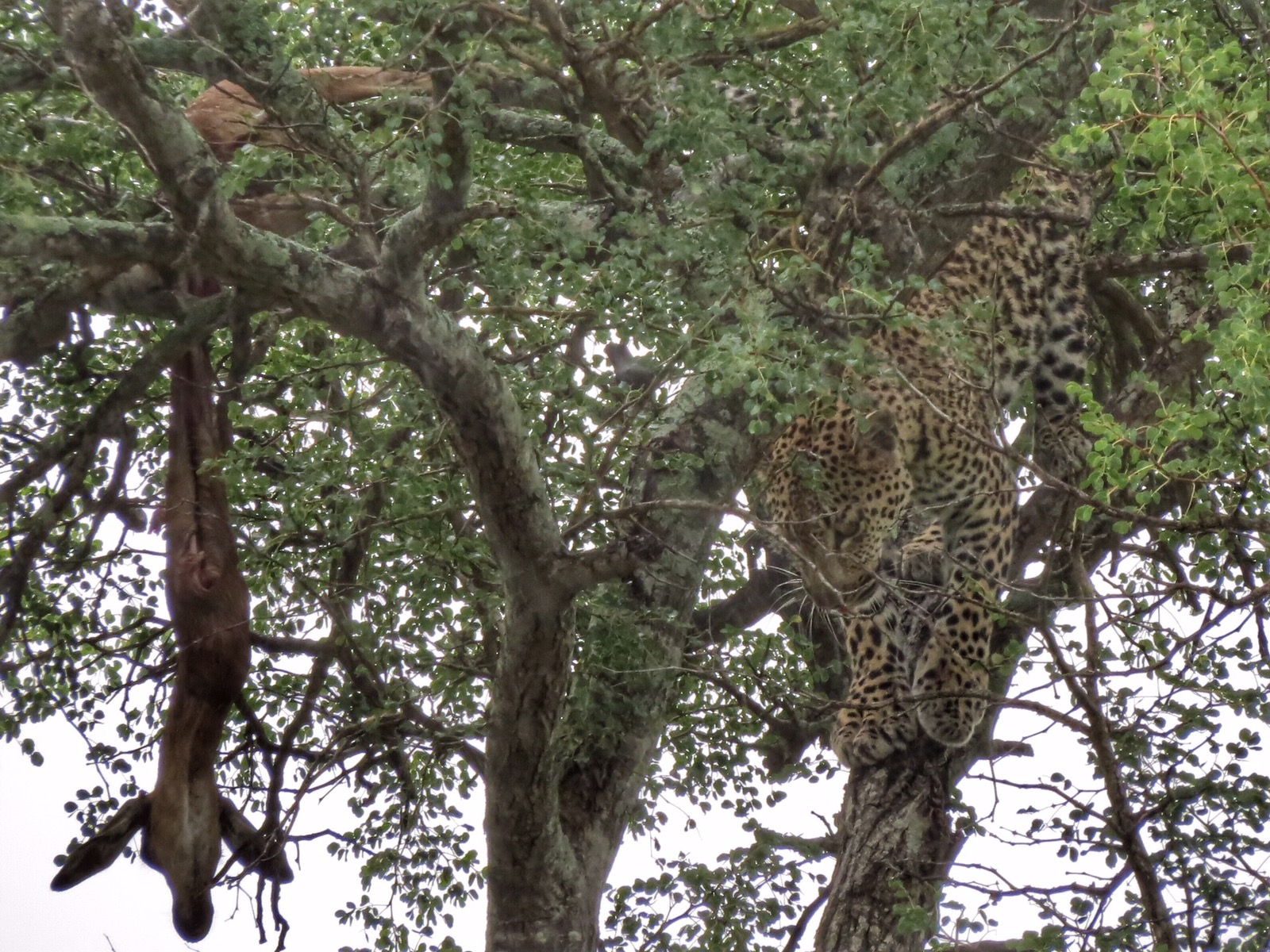
…leaving only a few bites hanging around for supper that evening, or breakfast the following day.
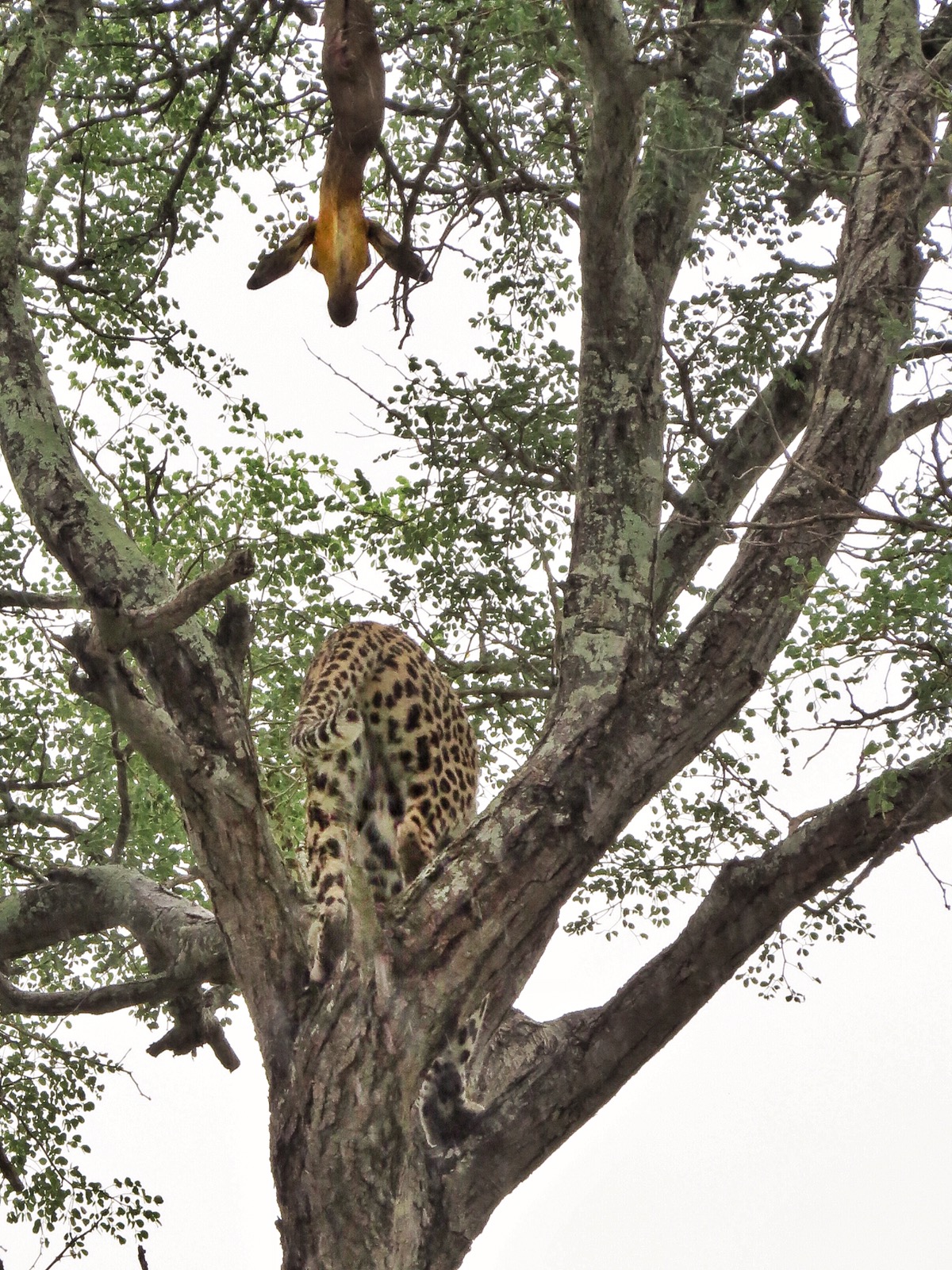
After spending a couple of days with something as beautiful as the leopard it’s easy to forget that the park is bursting with life of many types (albeit hard to spot in such high bush). Some of the elephants here have the biggest tusks we’ve seen in all of Africa.
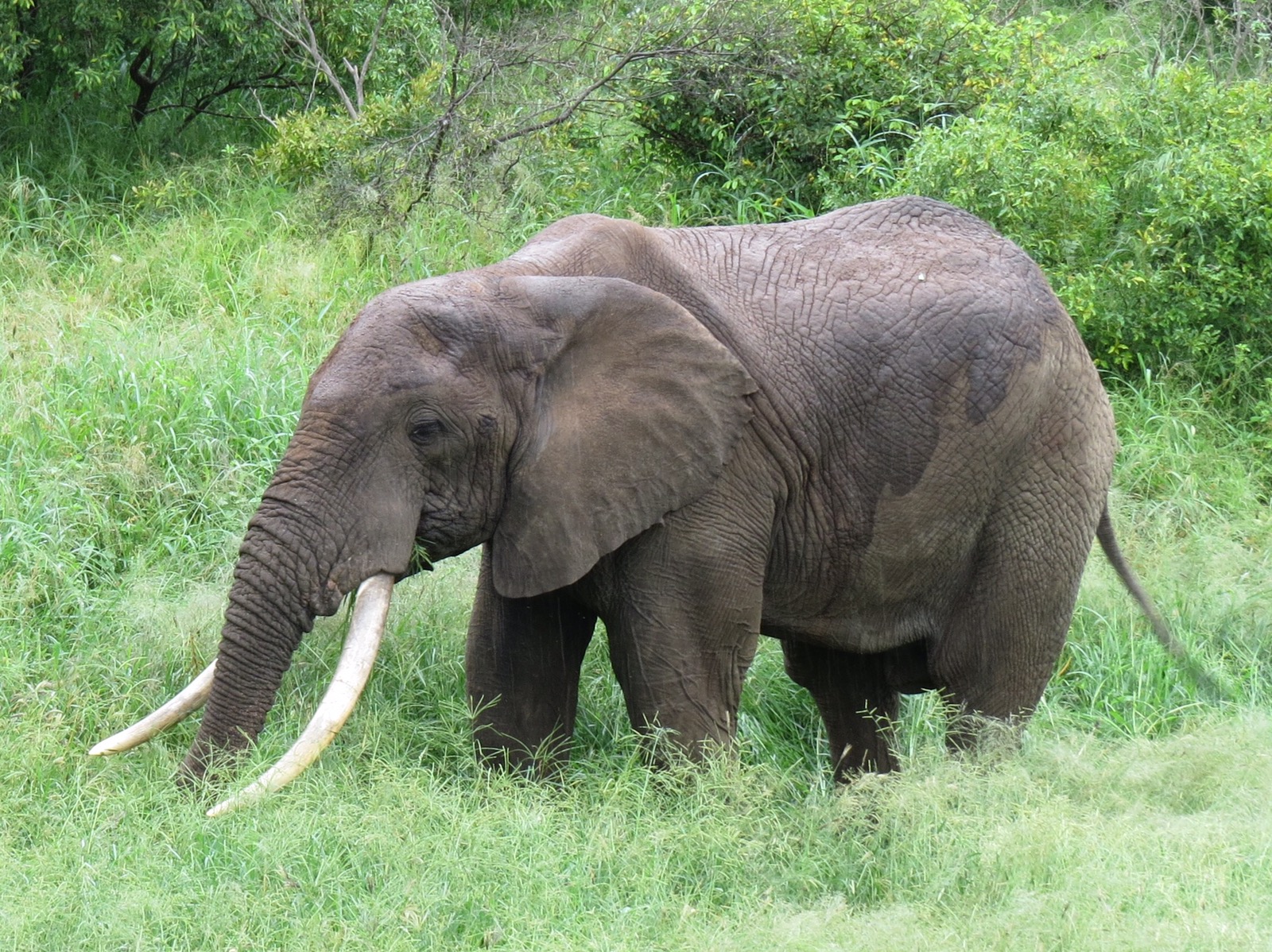
And the kudu may not be the kings of the animal kingdom, but they stand around and pose as if they were.
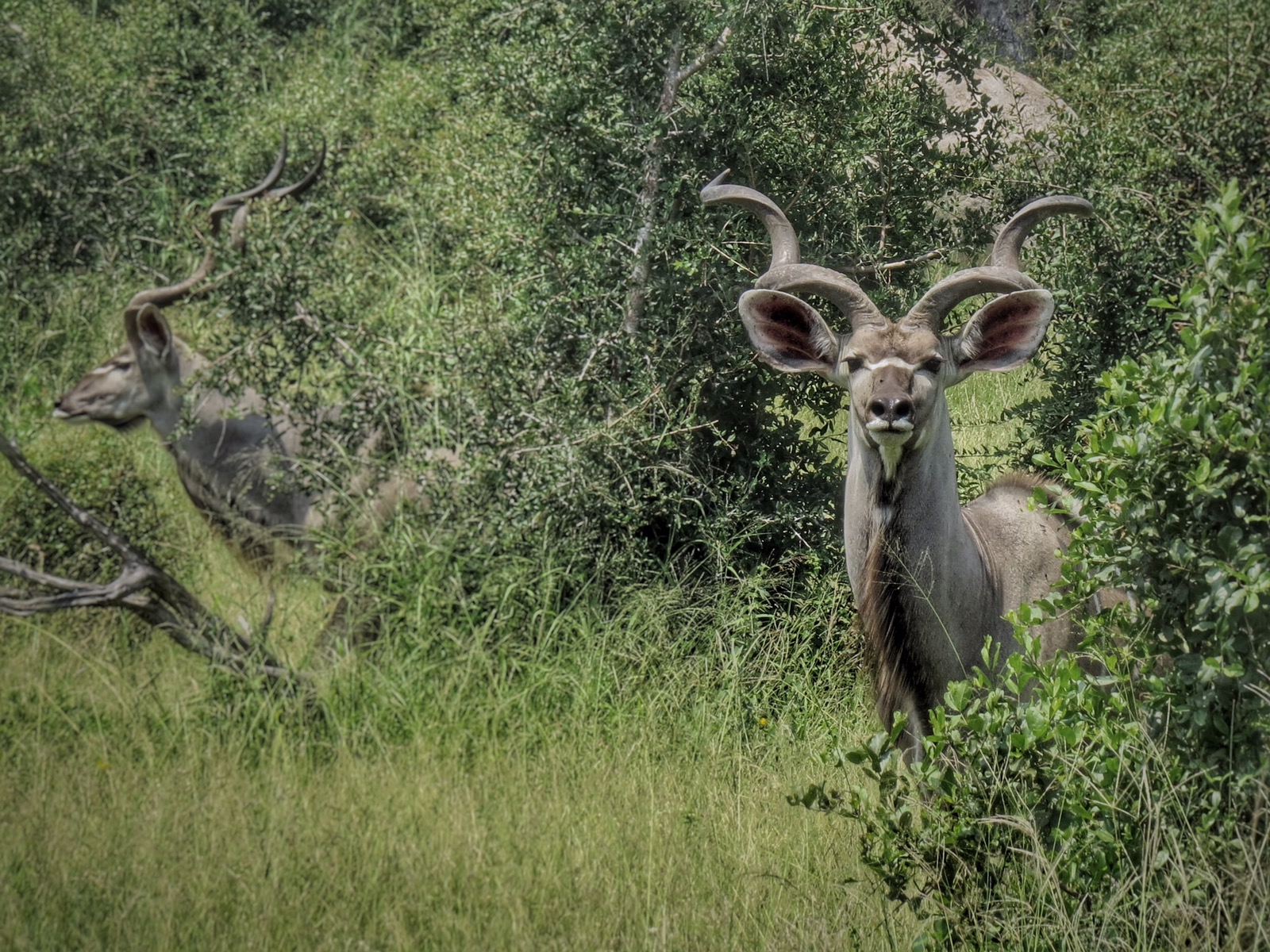
With so much rain recently, the normally dried up, wandering creeks have been turned into pulsing, turbulent river beds that need care when crossing.
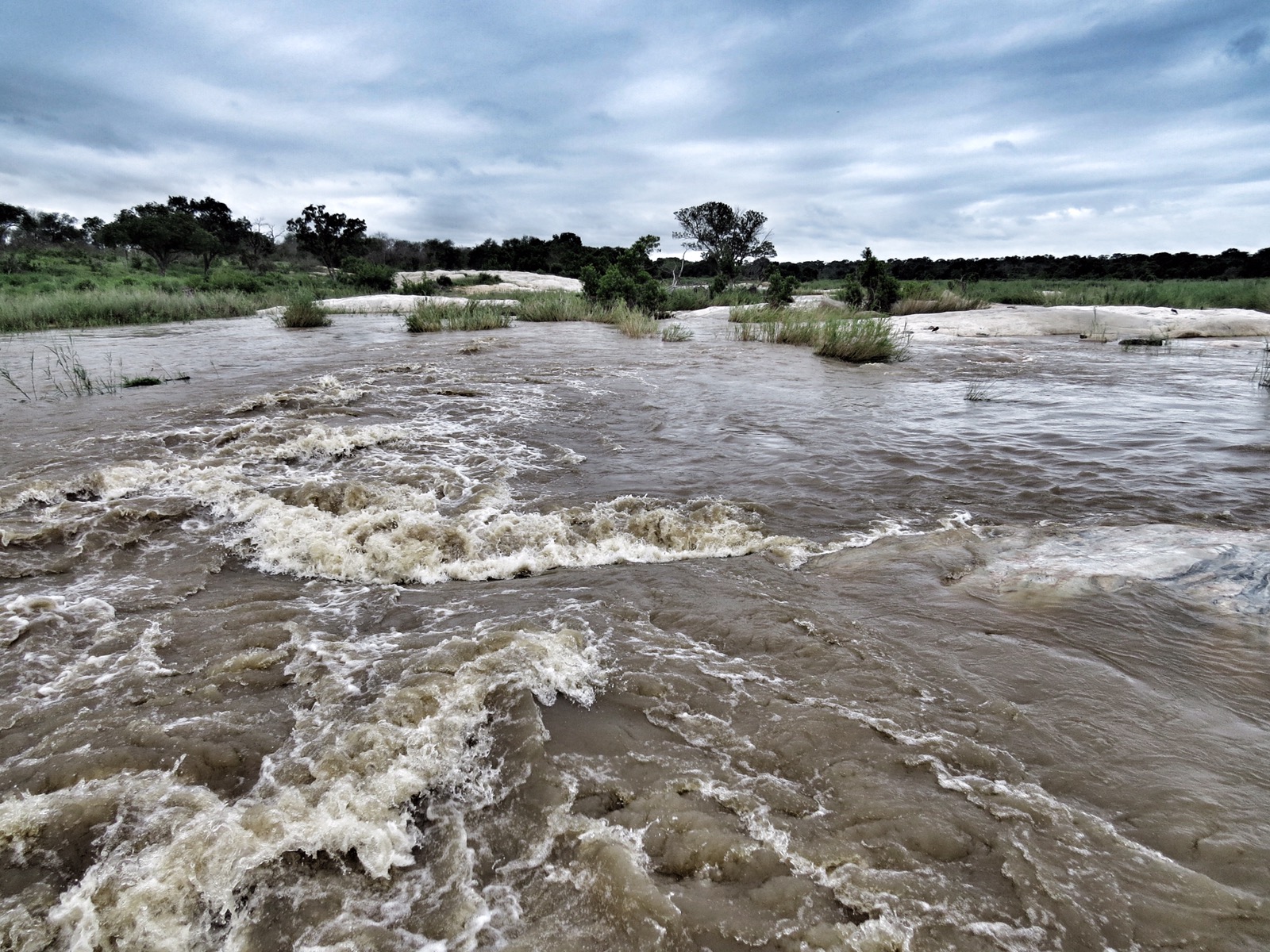
It’s always tempting to stop in the middle and take a couple of pictures. There are unforeseen dangers though (apart from crocs and hippos). When we stopped briefly in the middle of one shallow dam wall, within 60 seconds the car was surrounded by vicious predators. I could have just kept driving, but with 30 or so of them around the wheels and under the vehicle, if I’d driven off I’d have left a jigsaw of shell behind me.
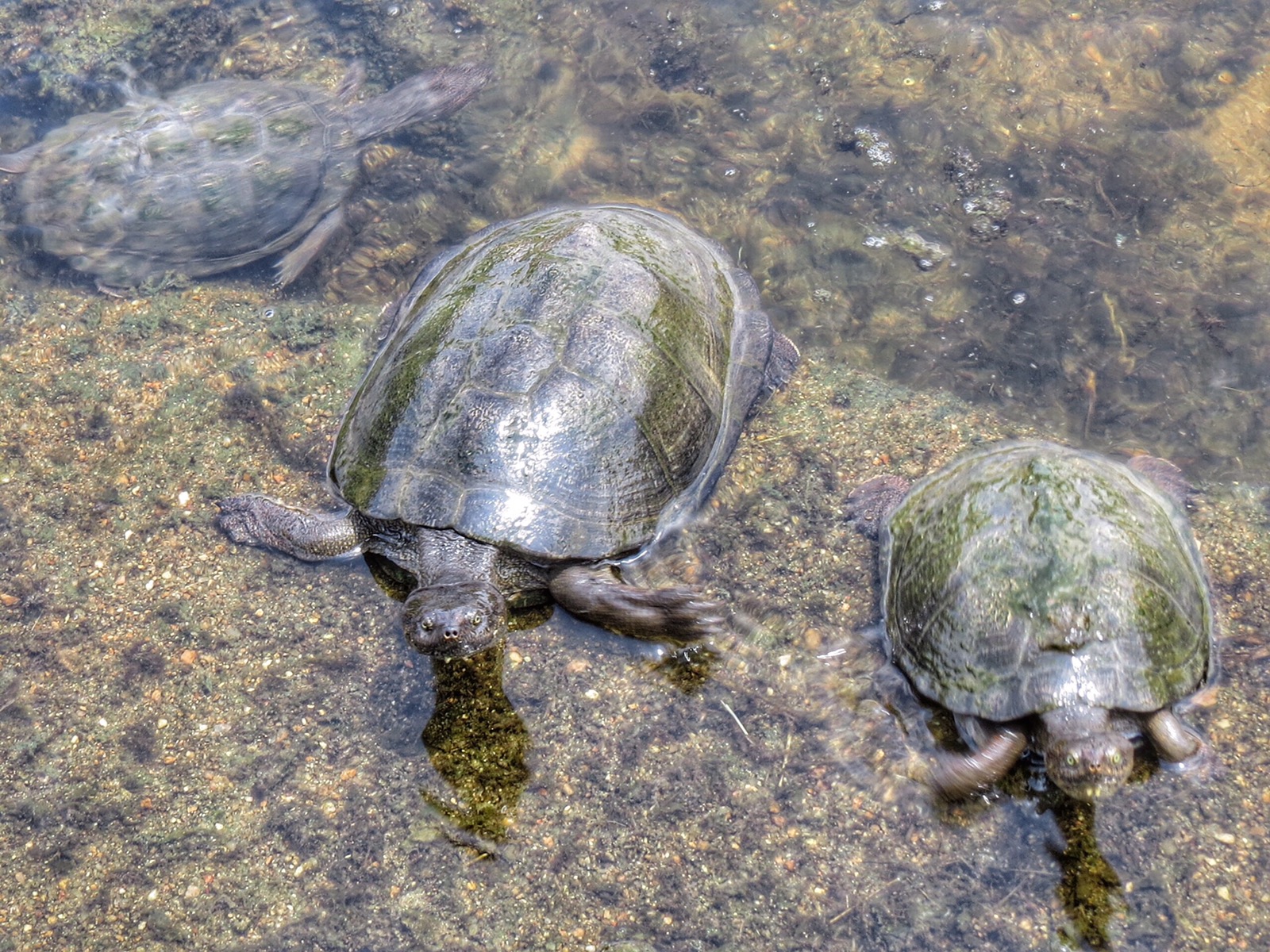
Still, there’s always something around that would have been prepared to pick up the pieces and benefit from the carnage.
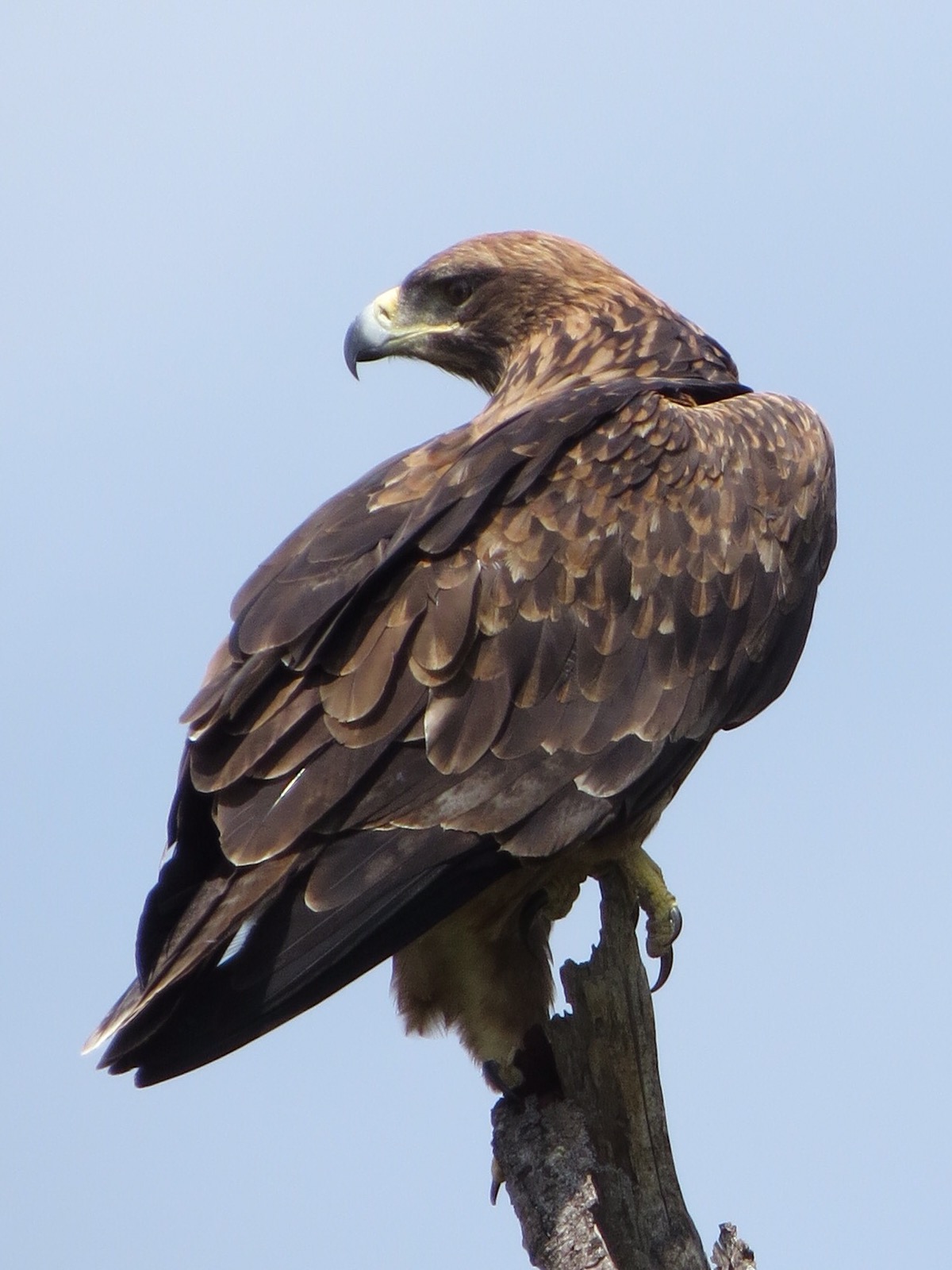
Mind you, not everything around here is predatory (at least not obviously so). Some of the birdlife in particular seems to have little purpose other than to look outstandingly beautiful. Like the European Roller. At one point (a couple of years ago) we seemed to see them everywhere, but haven’t seen any for at least 18 months.
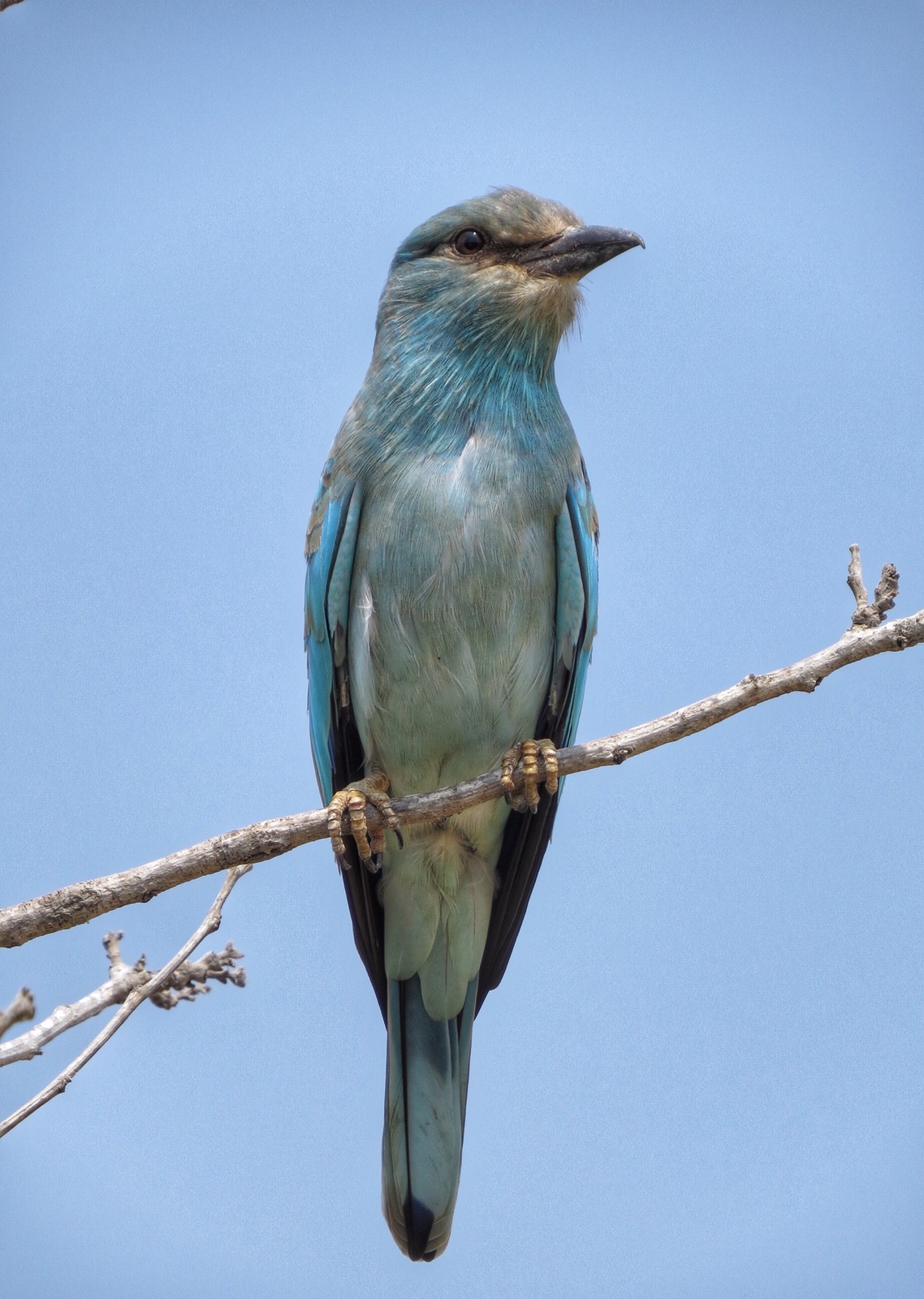
The Lilac Breasted Roller is perhaps even more beautiful and even more rare in recent years.
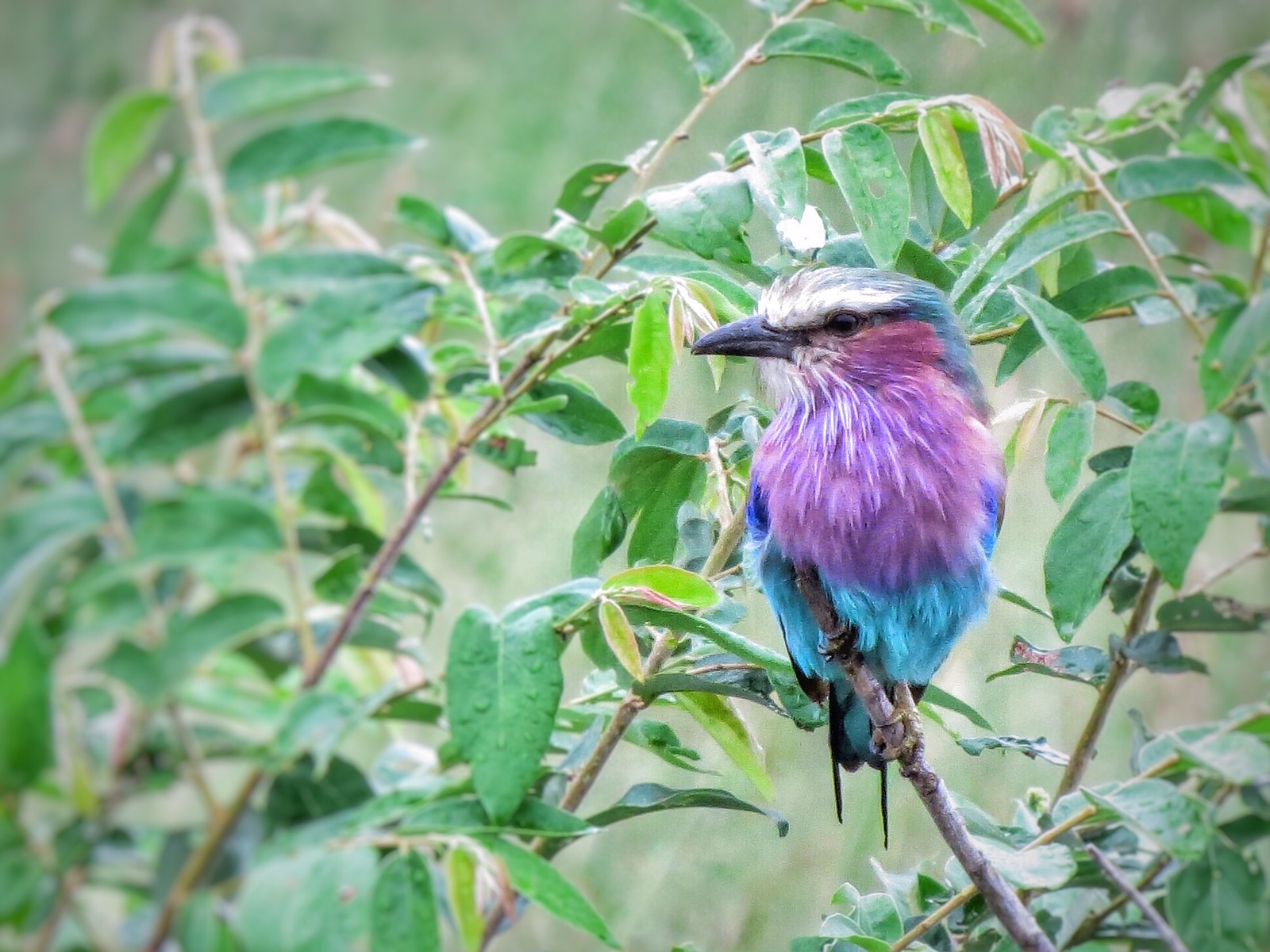
Of all the things that we thought were truly rare, and have seen precious few times, on this visit, rhino seem to be like busses. You don’t see one for ages, then suddenly they all arrive at once.
Over a 24 hour period, between solo animals, small family groups and cows with calves we saw 17 rhino.
Some we glimpsed wandering through the bush…
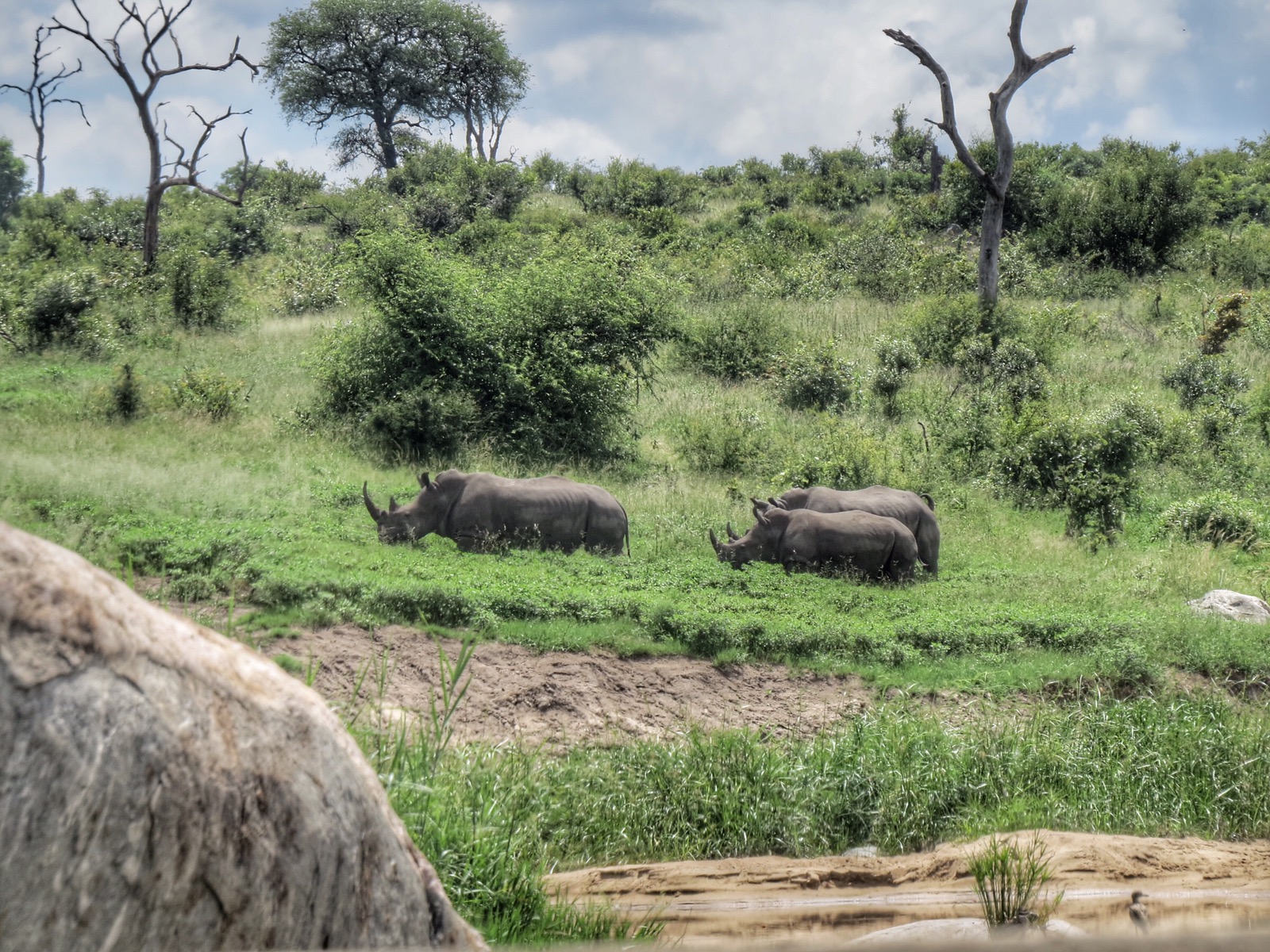
…others took us by surprise (and gave us a pretty hard stare) as we rounded a corner on a remote track…
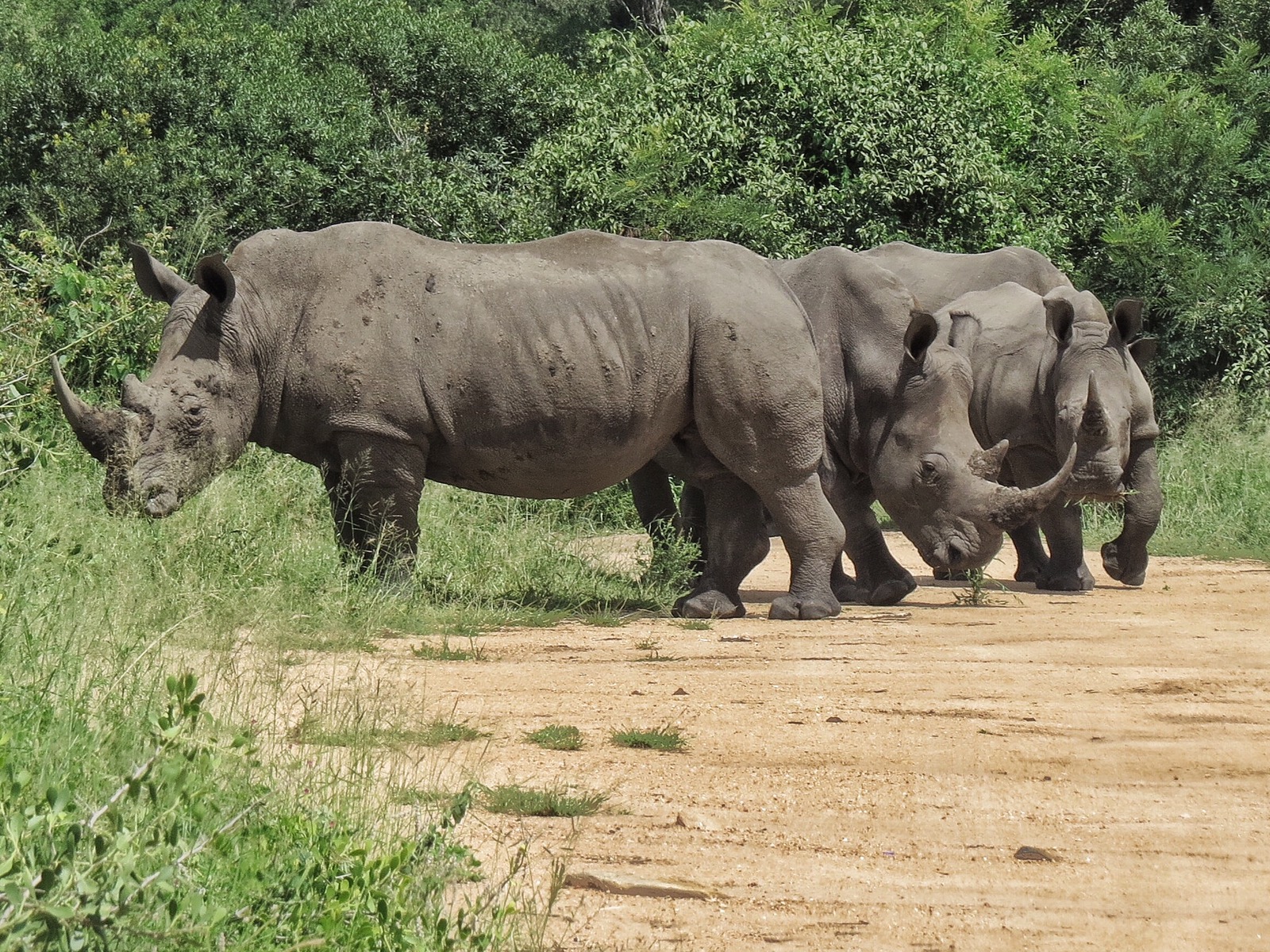
Even in the middle of poorly drained flood plains, we met a couple of really big fellows. This chap had just emerged from his morning bath, covered in flies and tics.
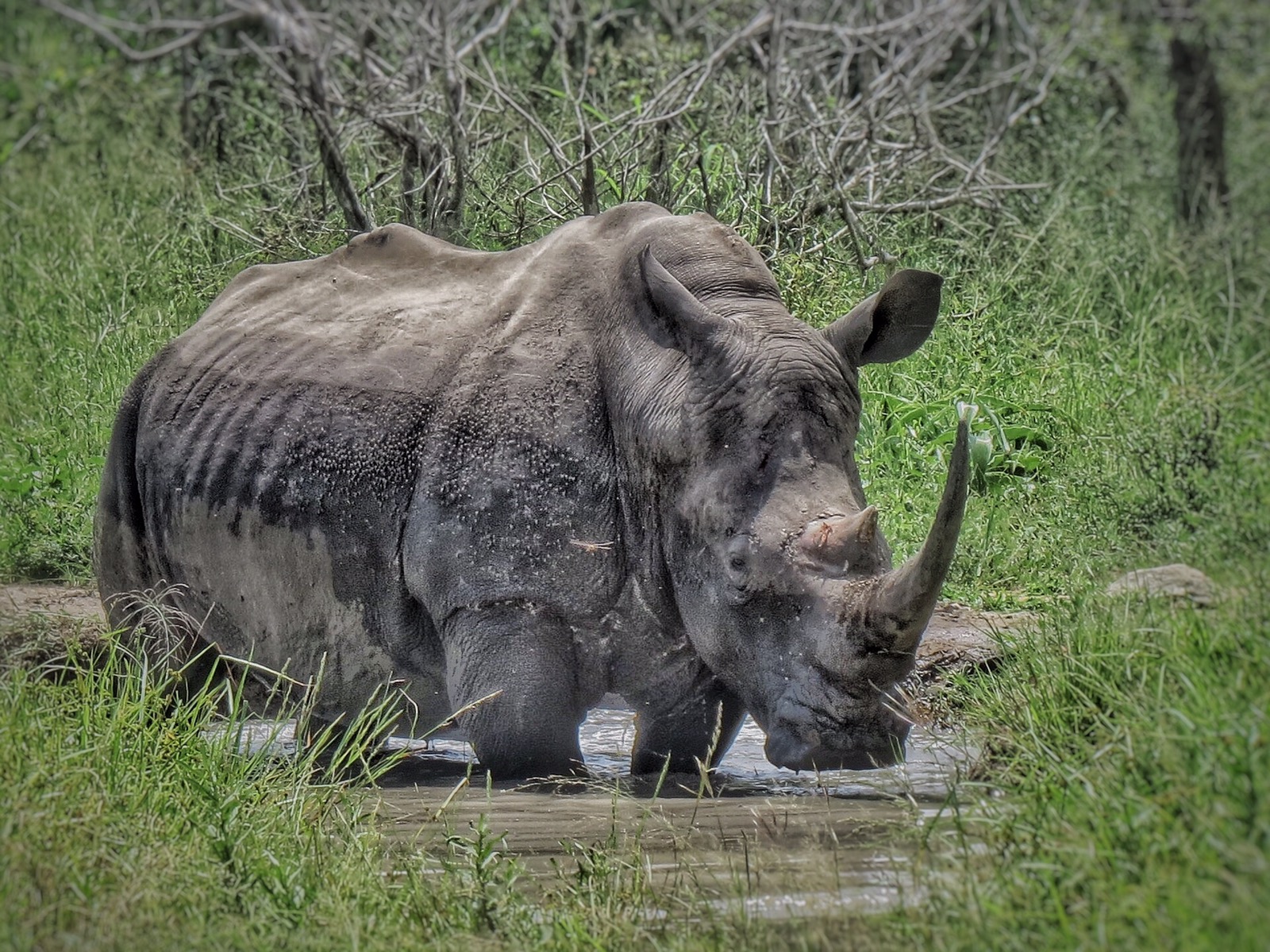
I don’t know exactly how brave / fierce / foolish you have to be to take on a rhino, but something had gotten close enough to give him a pretty nasty wound above his right eye.
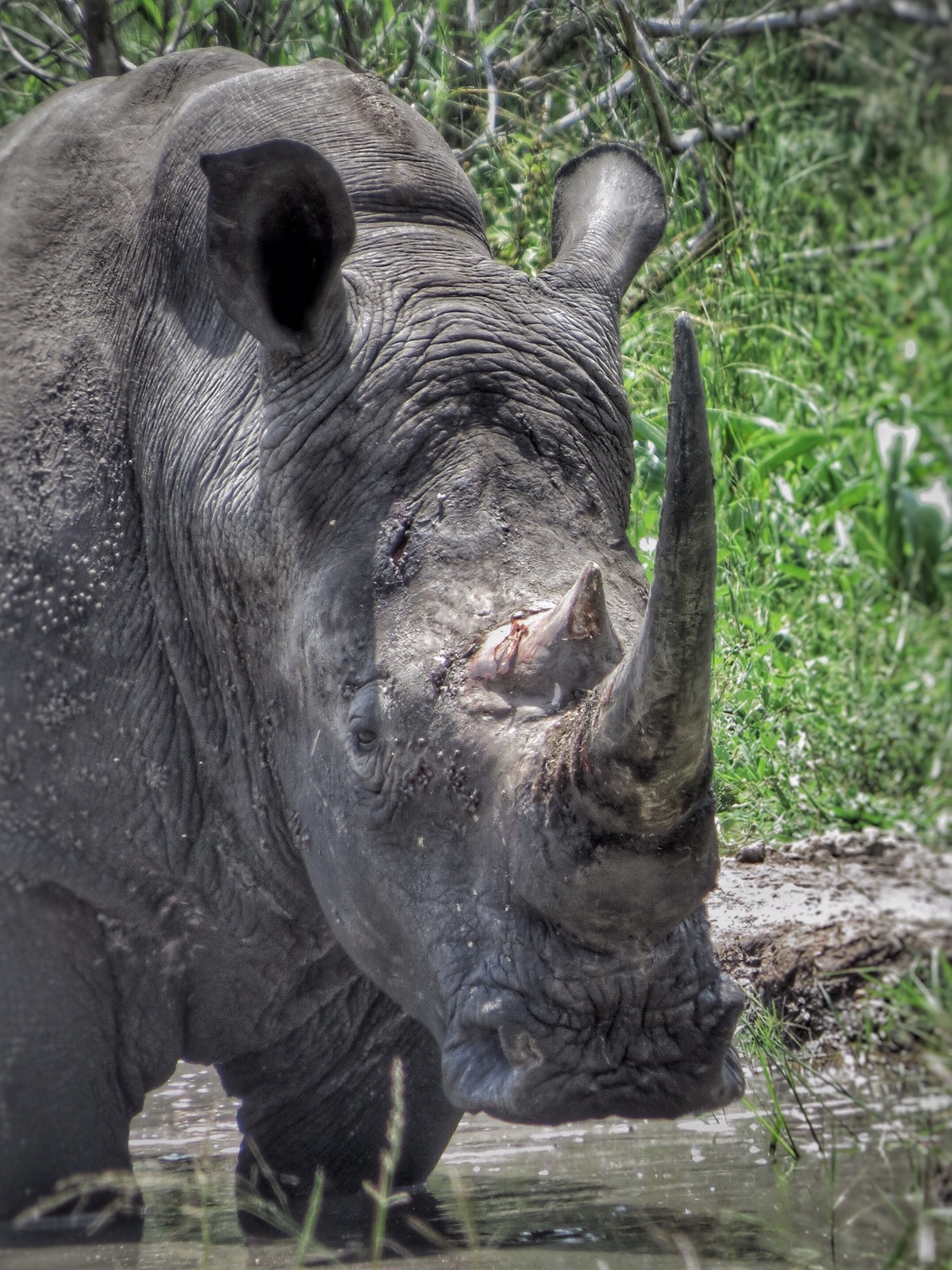
Covered in hundreds of flies, what he needs is to dry off a bit and then let the Ox-peckers get to work. There’s nothing they like better than to climb on board and spend the day feasting on flies and bugs picked fresh off drying rhino hide…
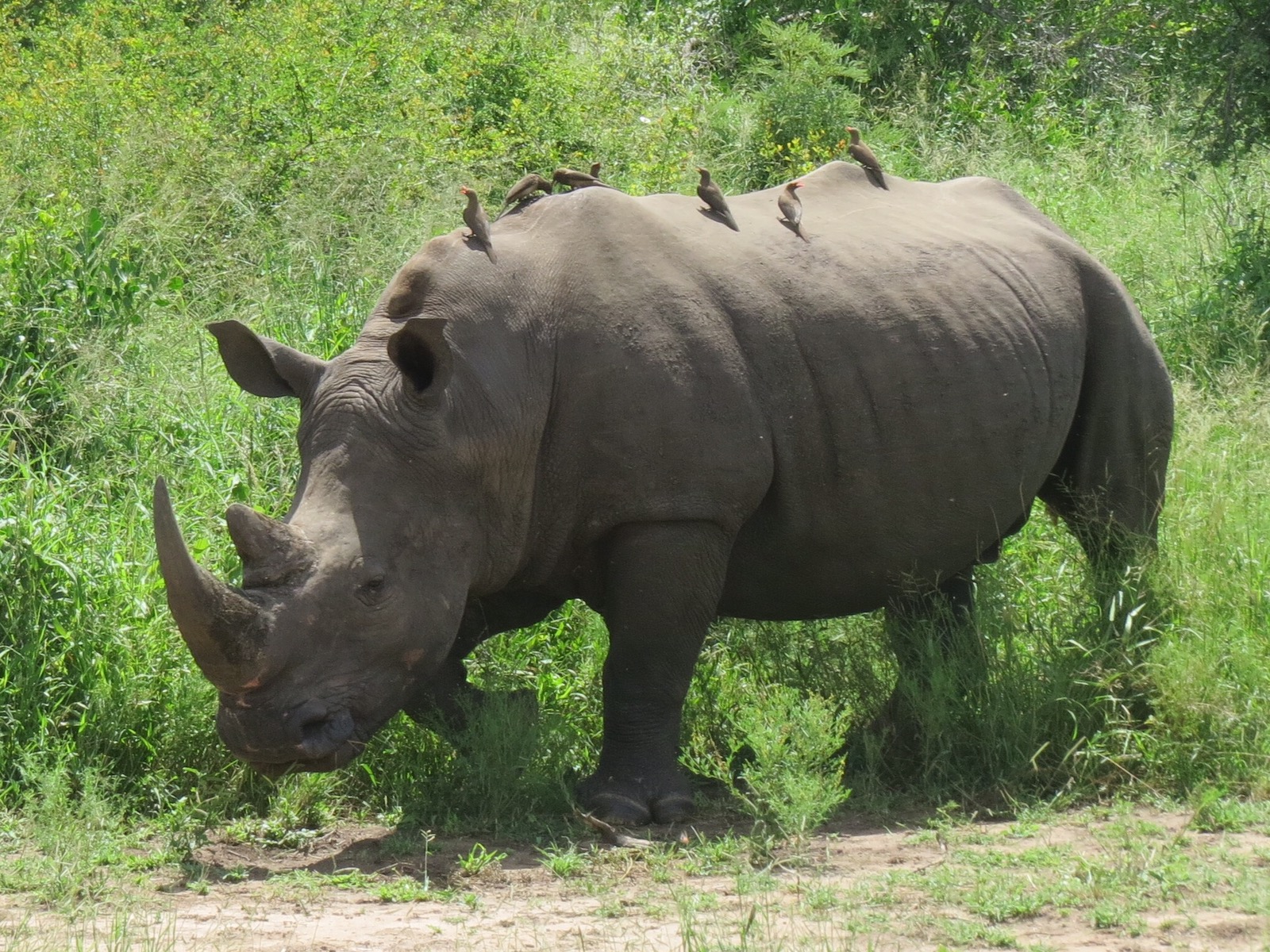
Nothing puts them off their stroke or diverts them from their task. The rhino put up with them fussing around every orifice.
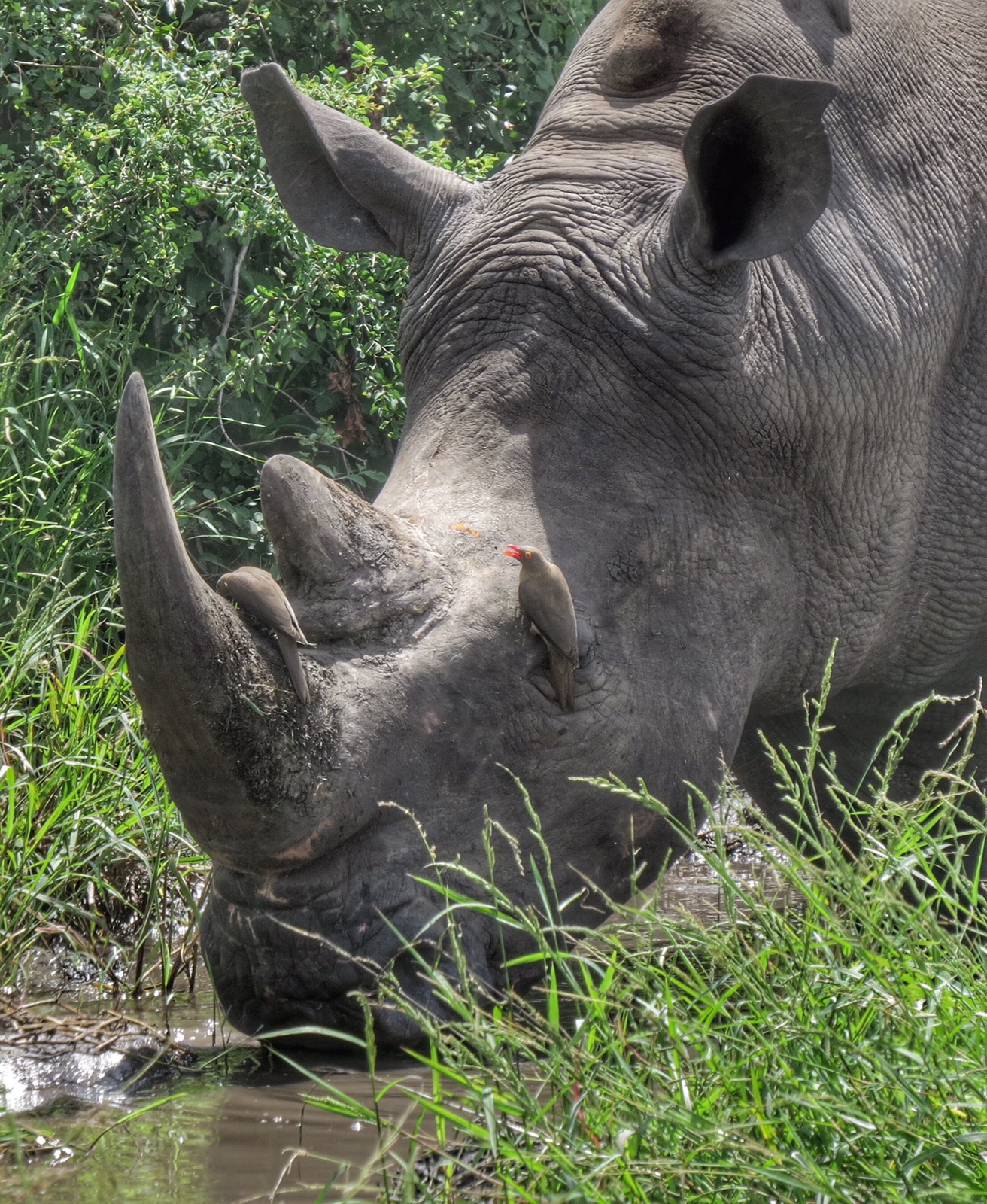
It seems every bird in Kruger is enjoying the wet season. Raptors get the spoils of the plentiful Game kills, migratory birds like the Rollers have plenty of berries and flies to sustain them, Beeaters swoop between the thorn trees…
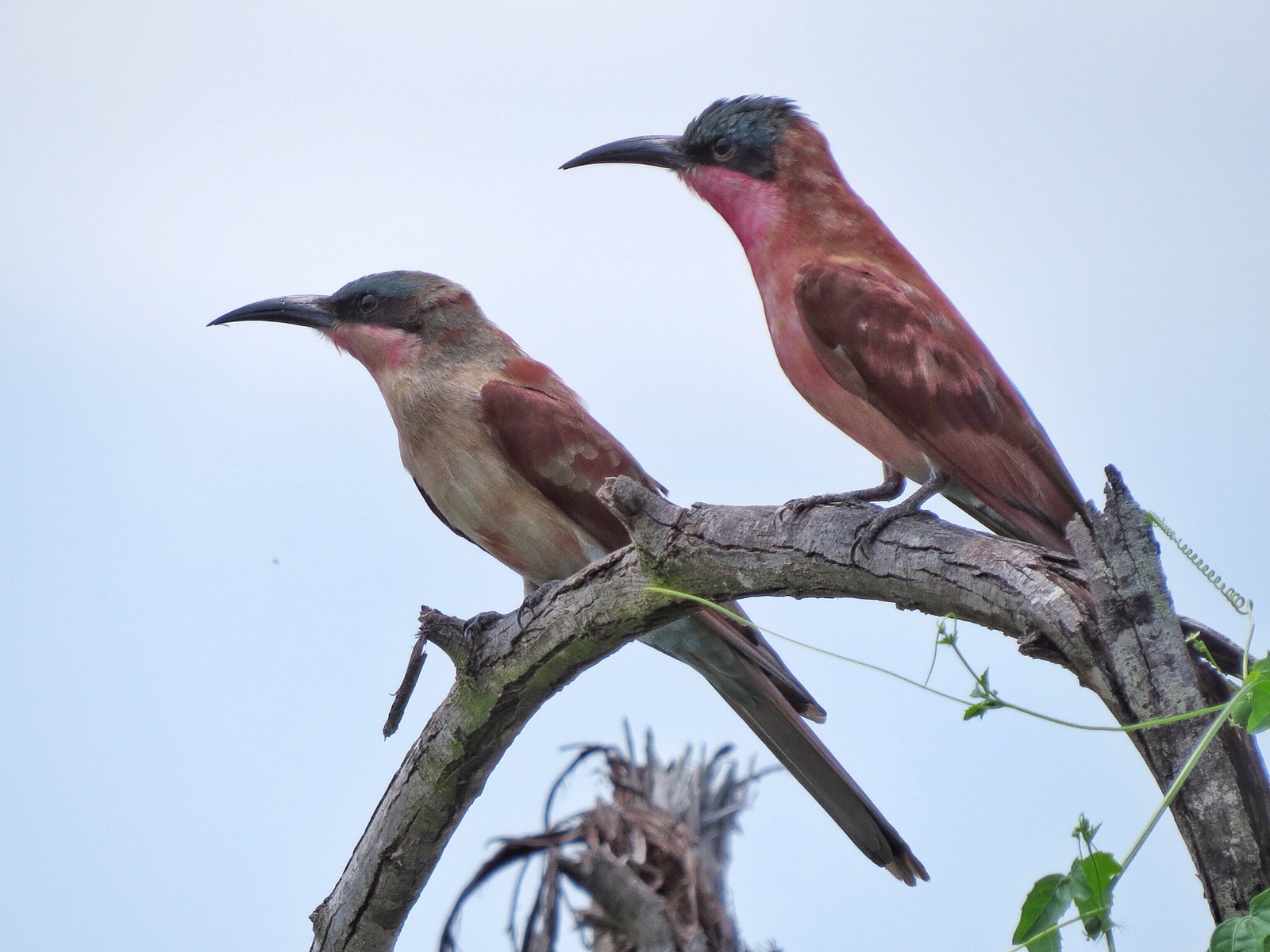
Around here, I guess one way or the other you’re either predator or prey. Which makes you think wildlife would be better off blending in and keeping a low profile. I’m not sure how that works if you paint yourself up like some sort of carnival queen – whoever said cricket was boring…
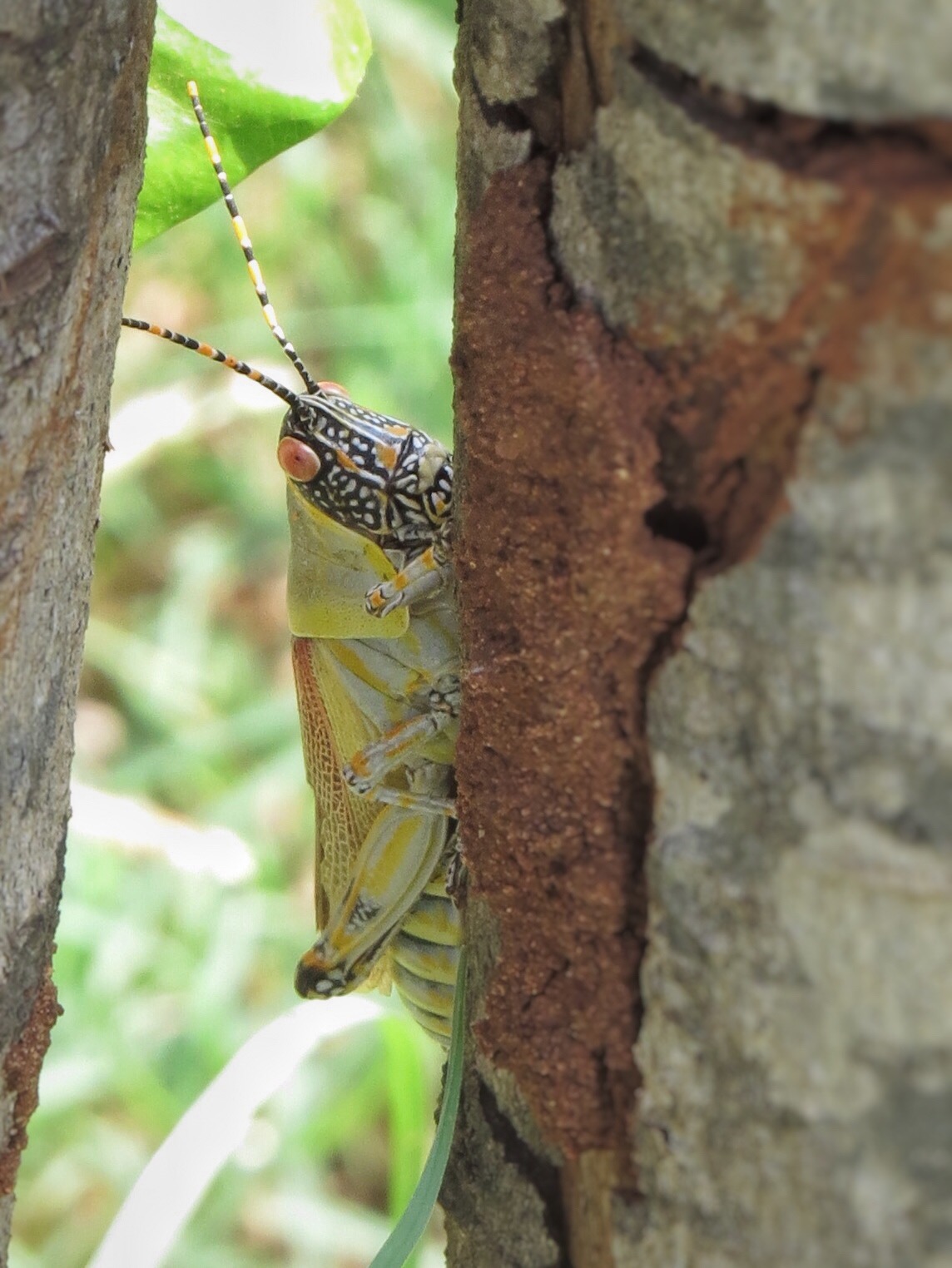
After 5 days in Kruger, we headed directly South. Only 100km or so away, across the mountains that border Kwazulu Natal and Mozambique is the landlocked, independent Kingdom of Swaziland.
We crossed the border at Jeppe’s Reef, high above sweeping plains of eucalyptus. The border itself couldn’t have been much easier – no visa charge, 50 Rand road toll charge ($4), 15 minutes in total. From the north the road is a steep switchback, the terrain is lush, mountainous and always shrouded in mist.
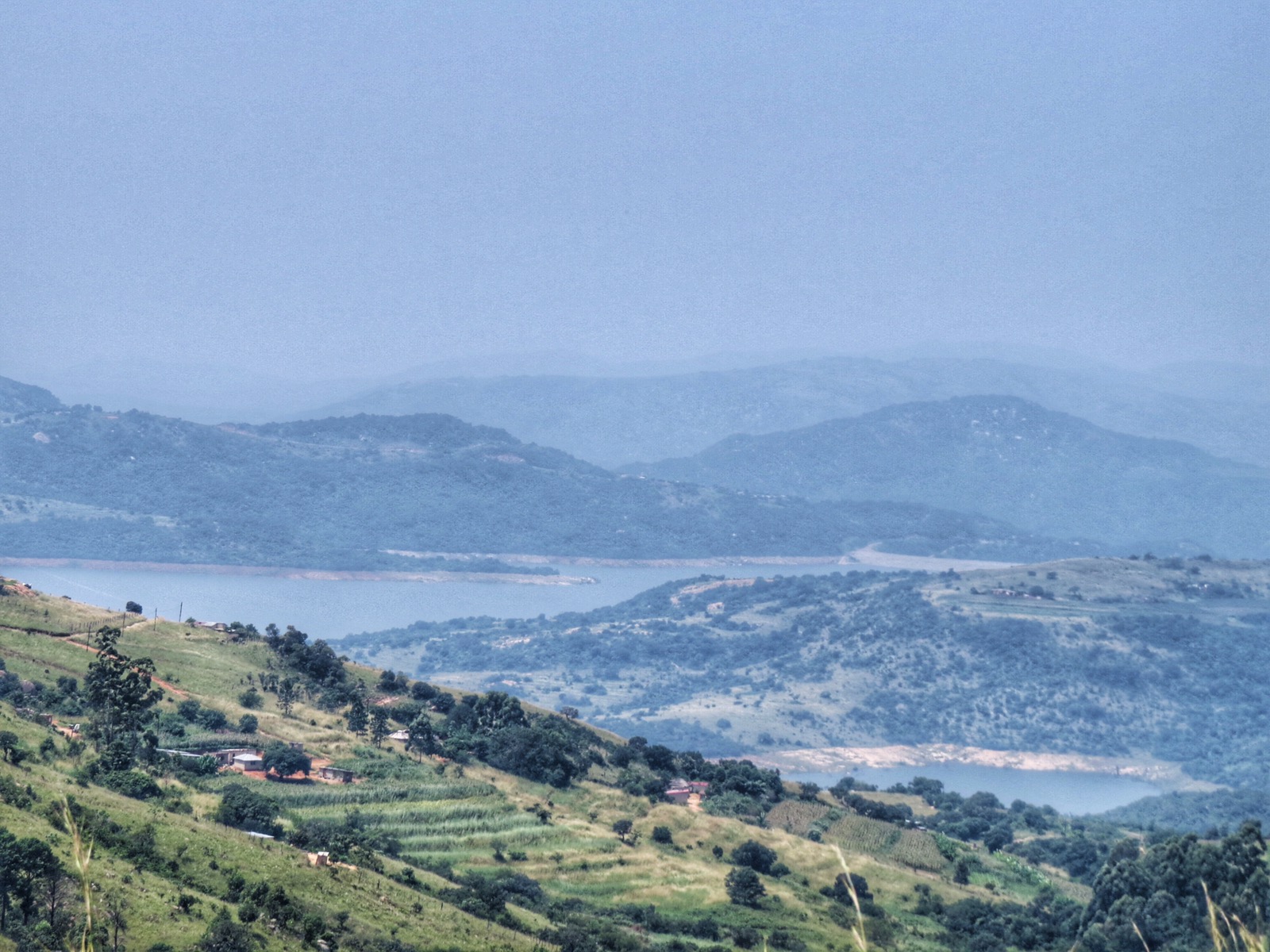
One mountain pass, rising up from the dam wall, was so steep and long that it took us 25 minutes in 2nd gear, doing no more than 20kph. By the time we got to the top the temperature gauge was firmly in the red and the car was whistling like a kettle.
After 150km or so we arrived near Manzini at our camp for the next 4-5 days. As we drove though the tracks of Milwane Wildlife Reserve the skies thickened…
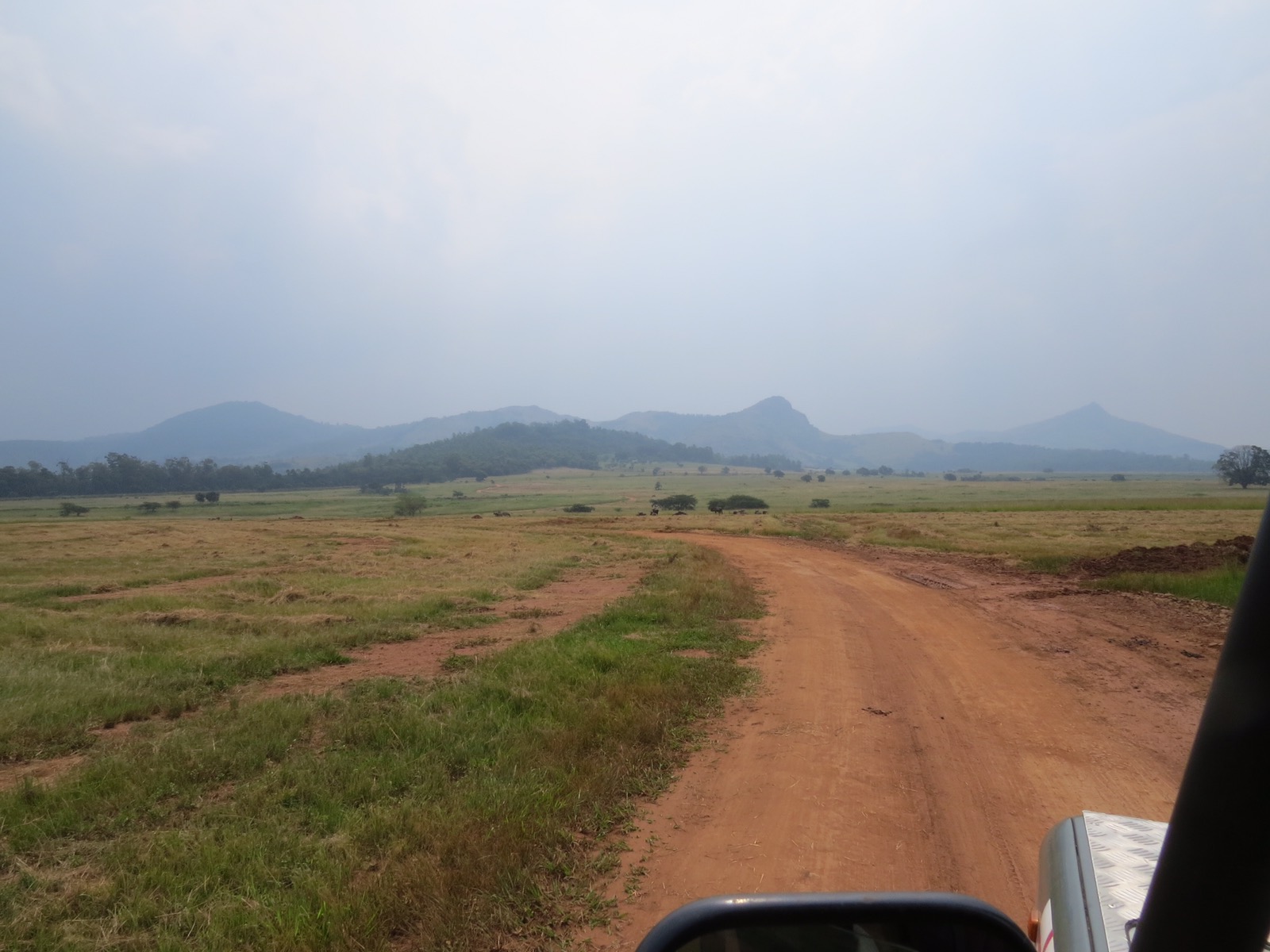
…the lightening struck to either side of us and the gathering storm welcomed us.
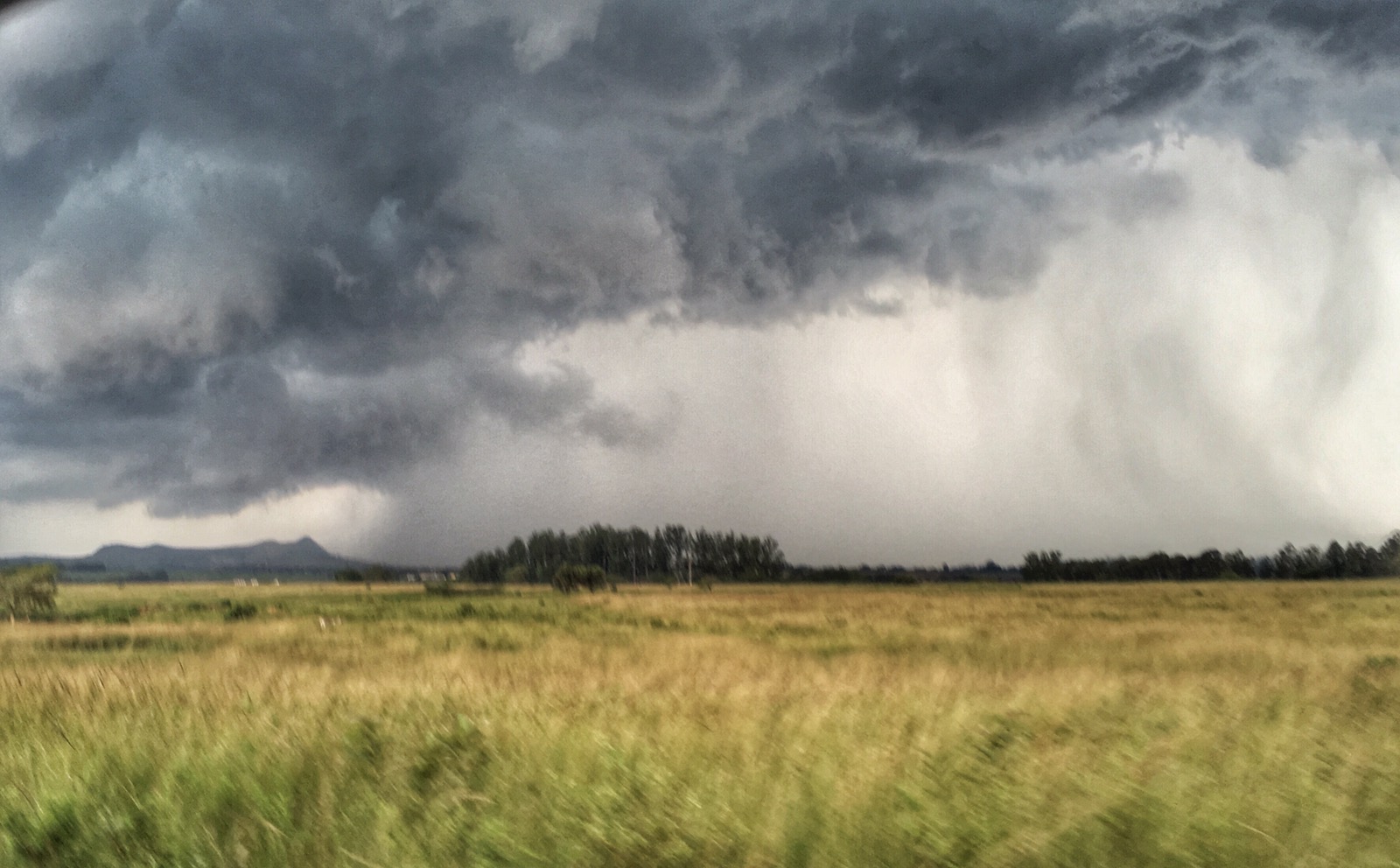
Within a couple of hours, the storm had abated, the skies started to clear…
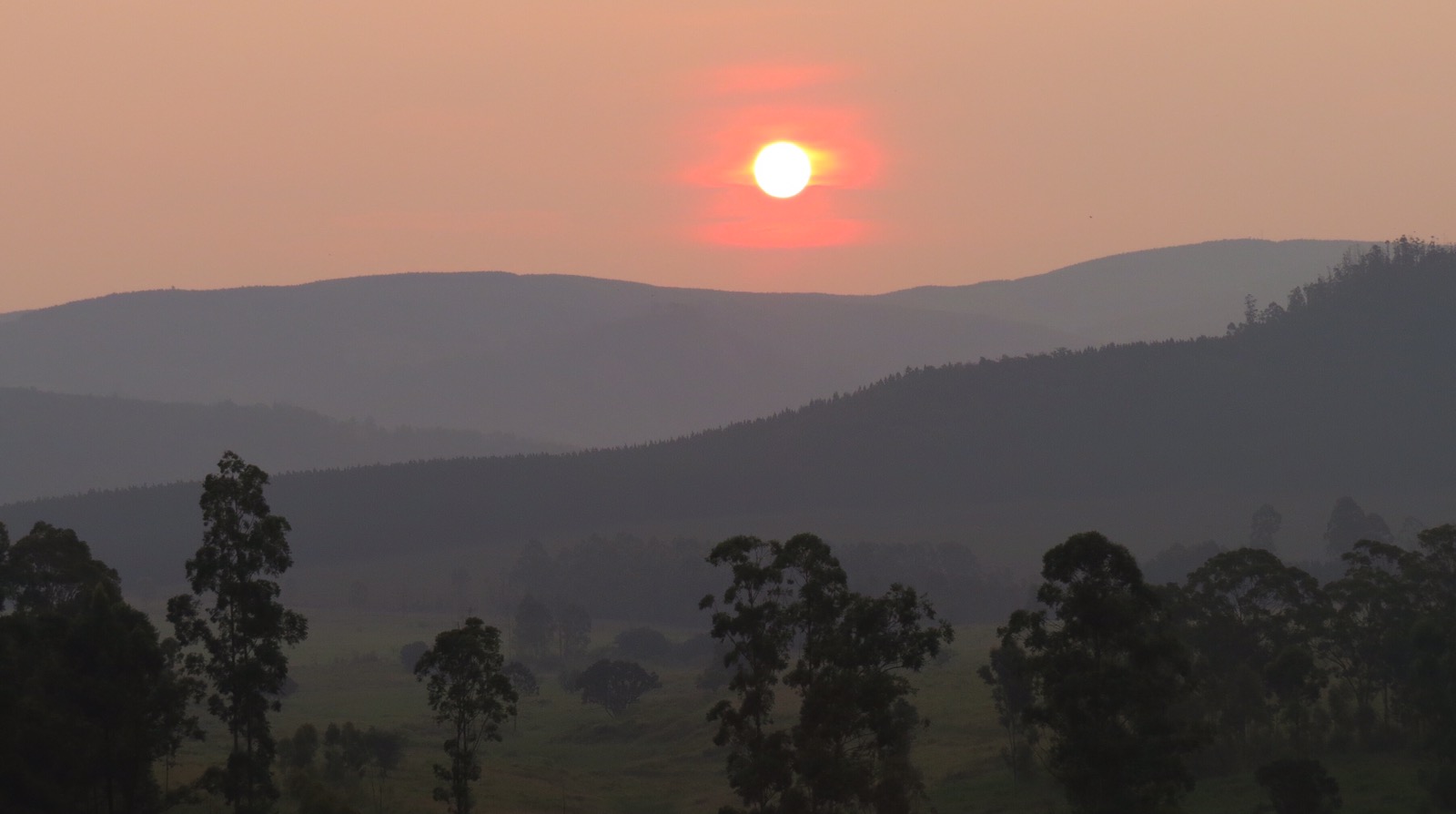
…and we were set for a lovely (but very cold) evening of star watching.
View From The Penthouse:
